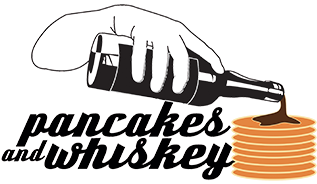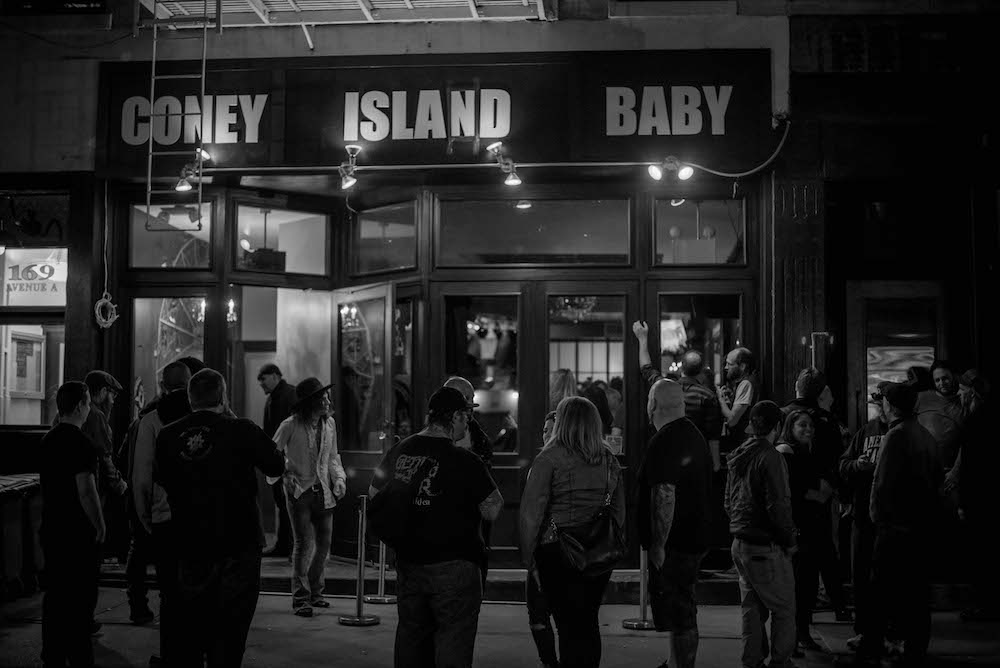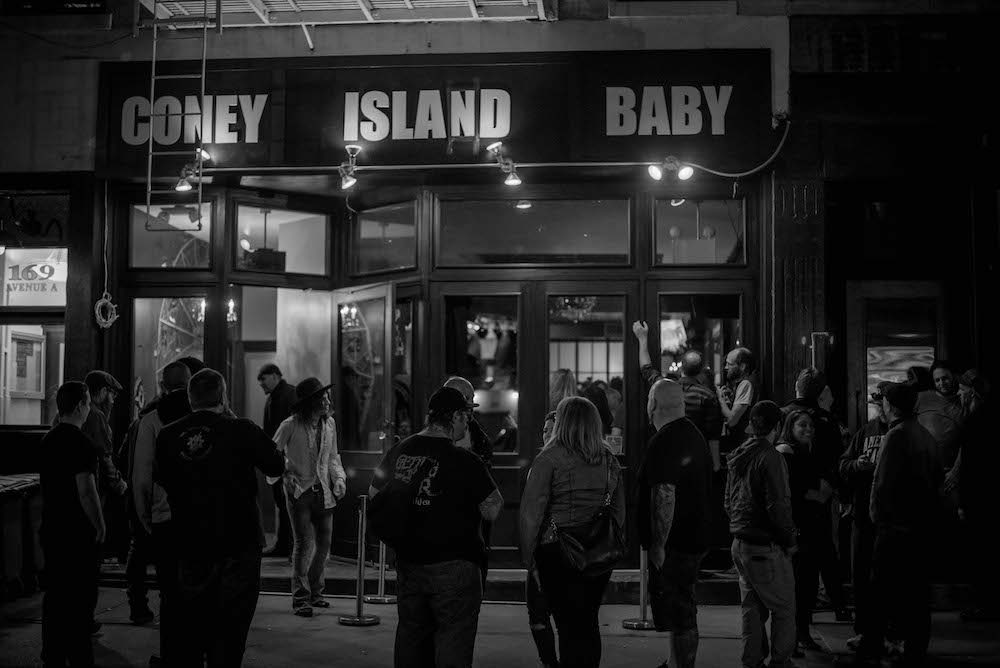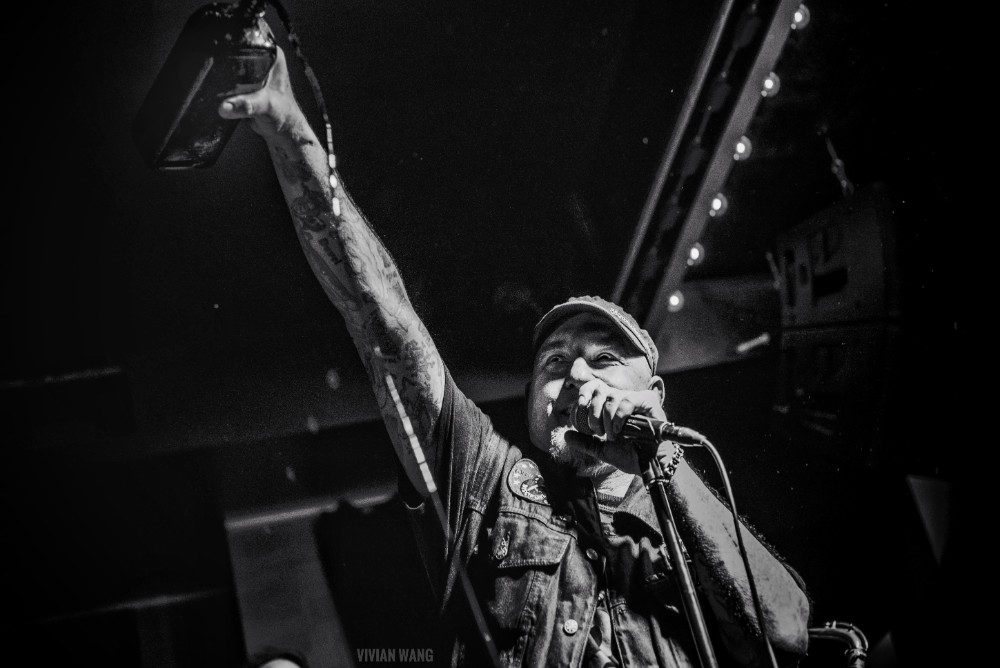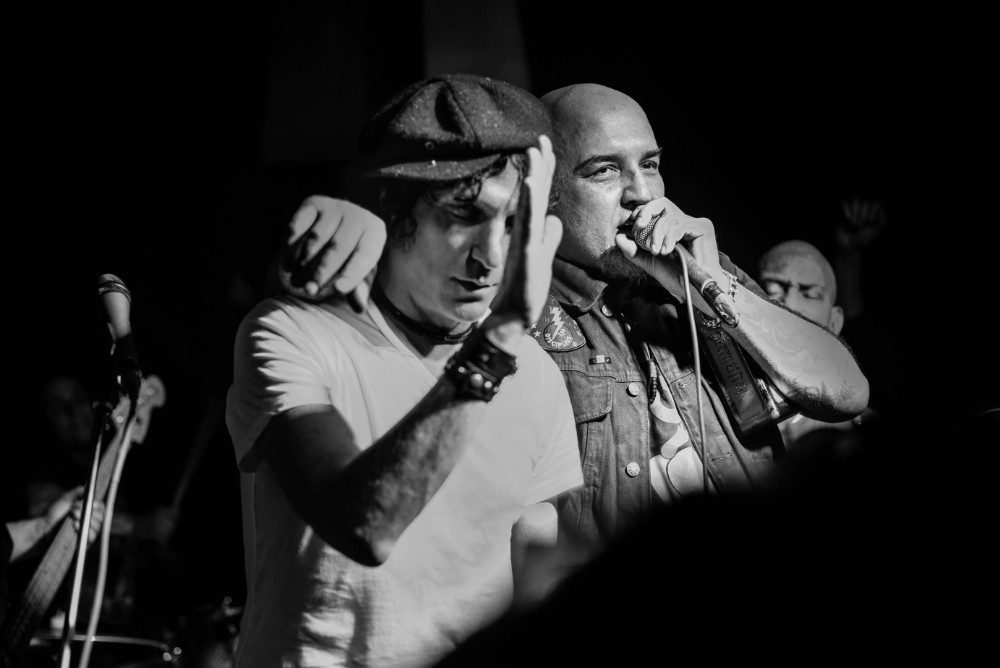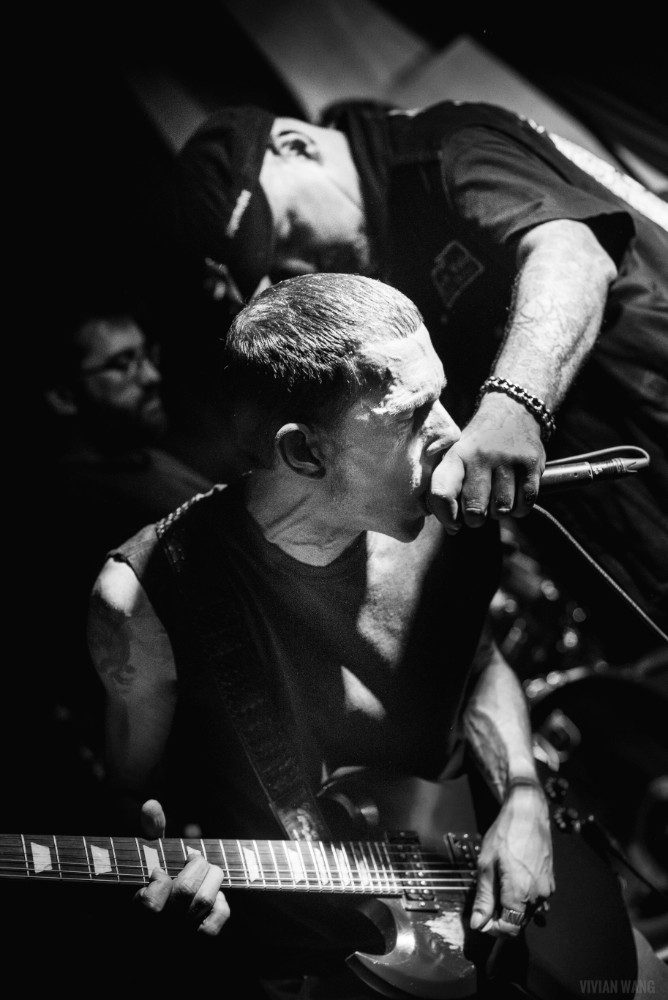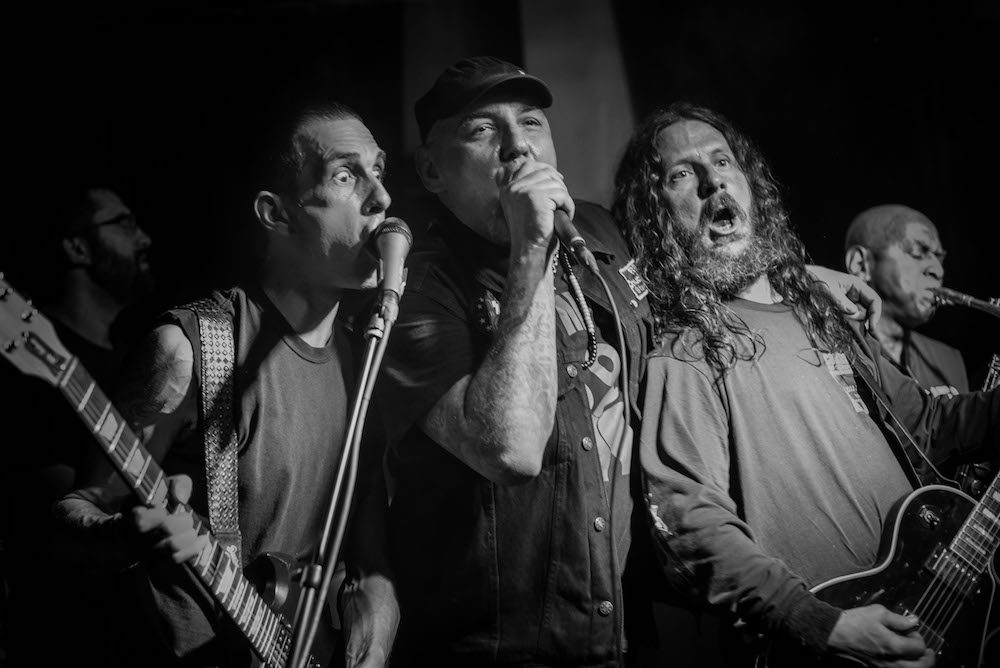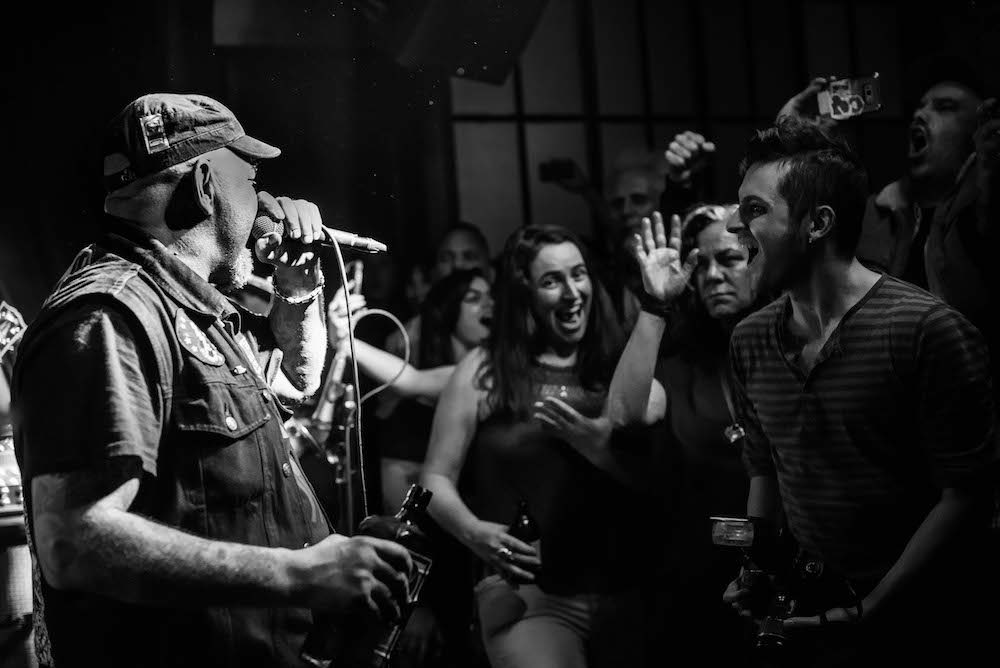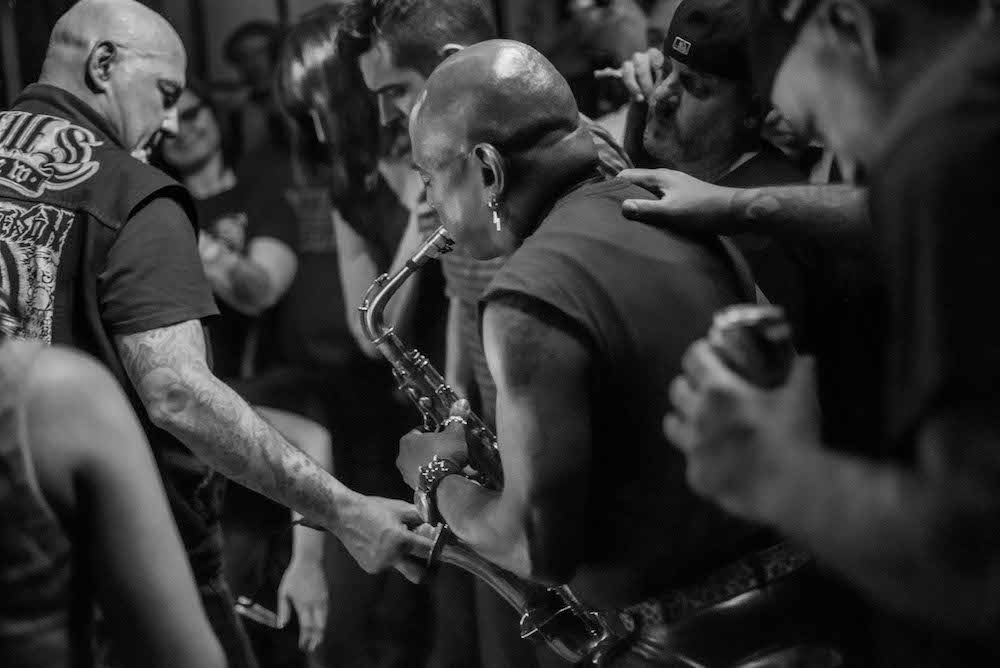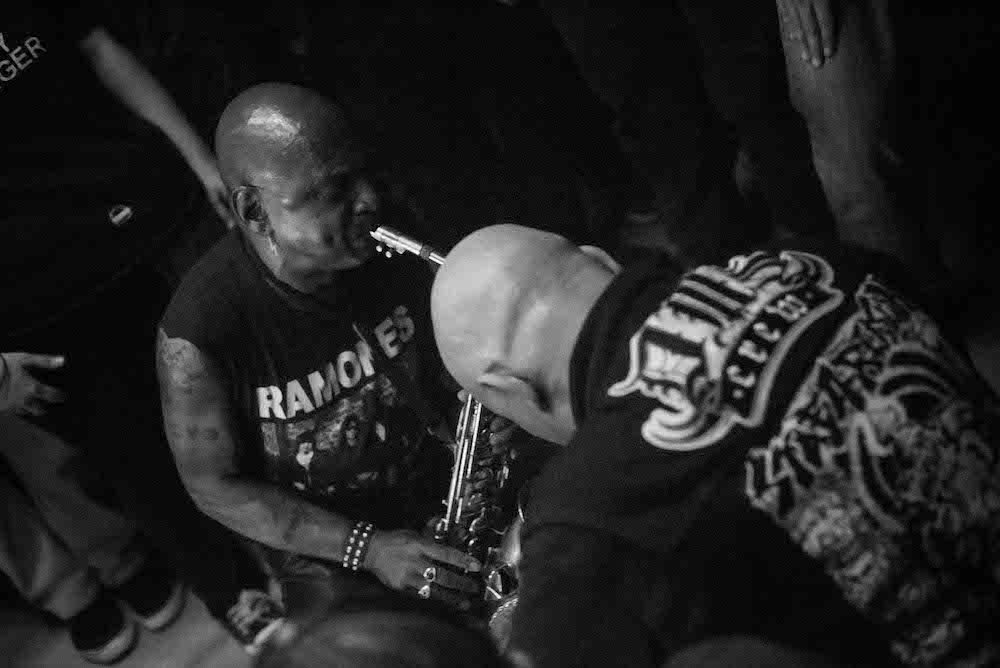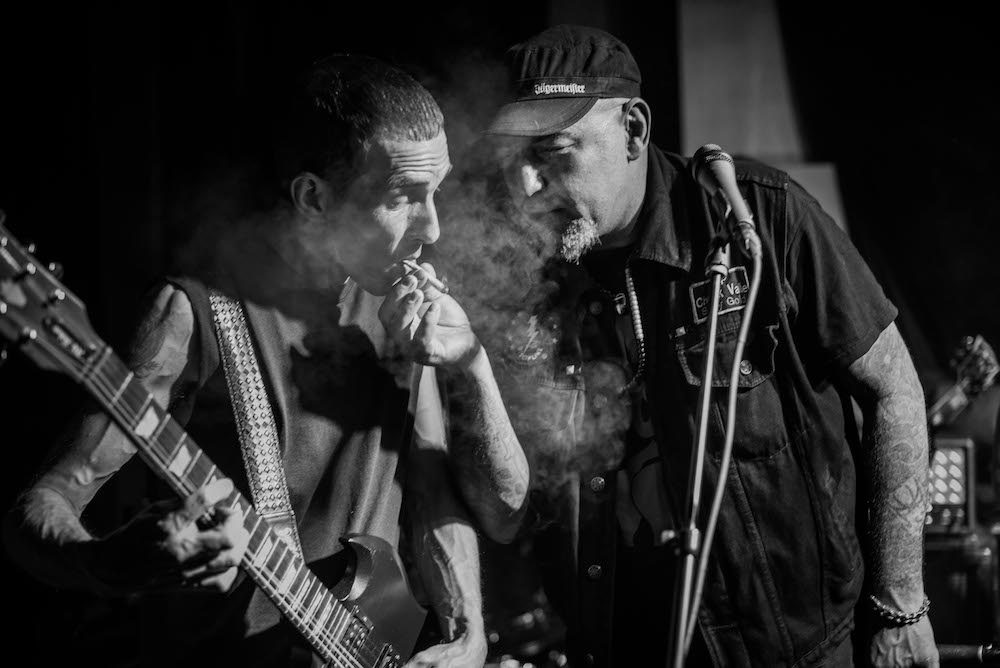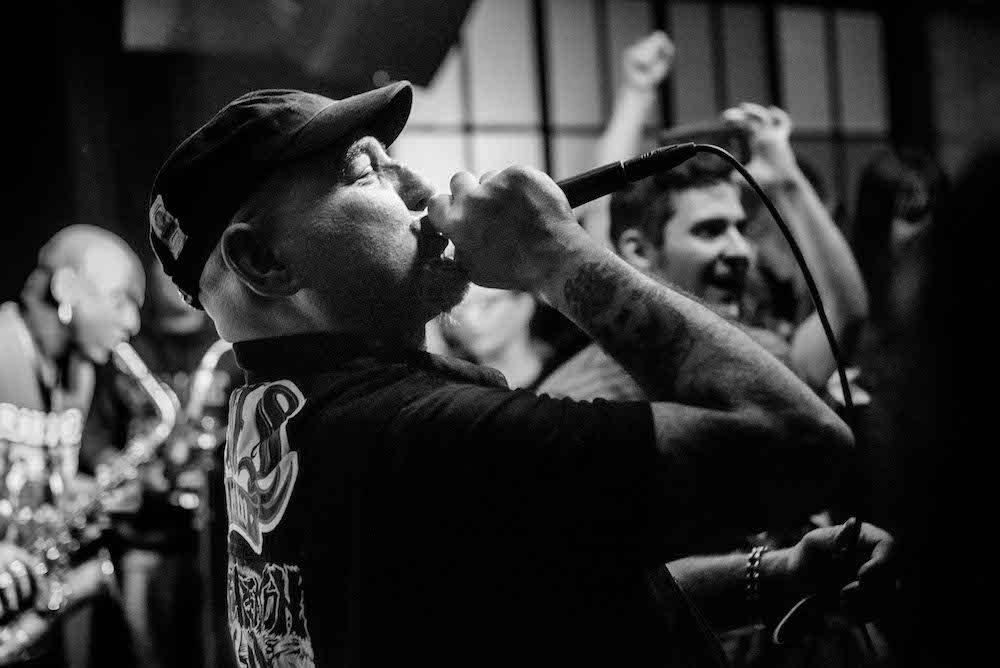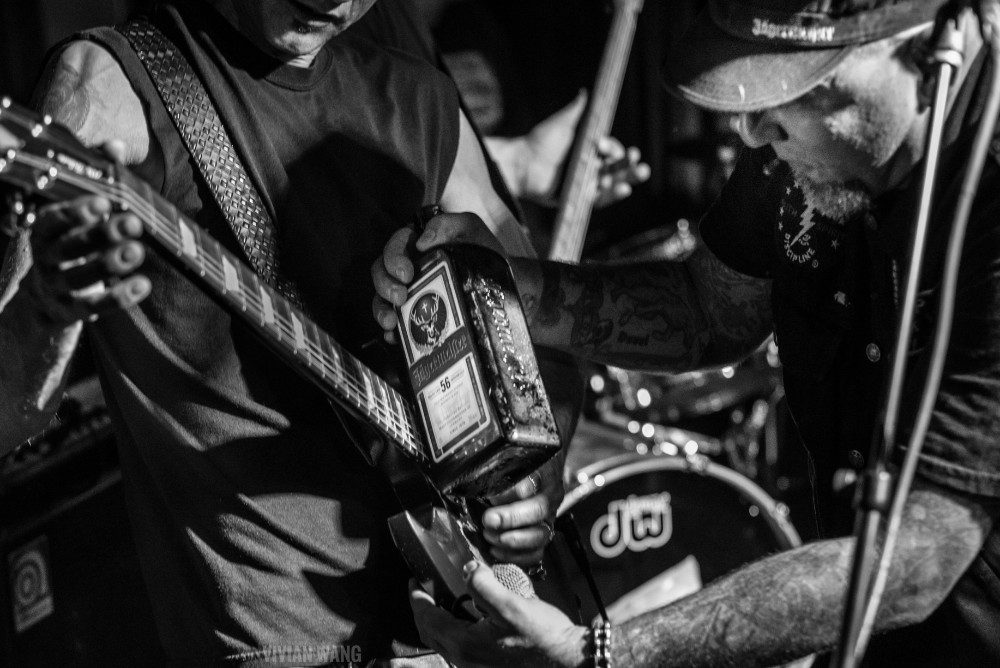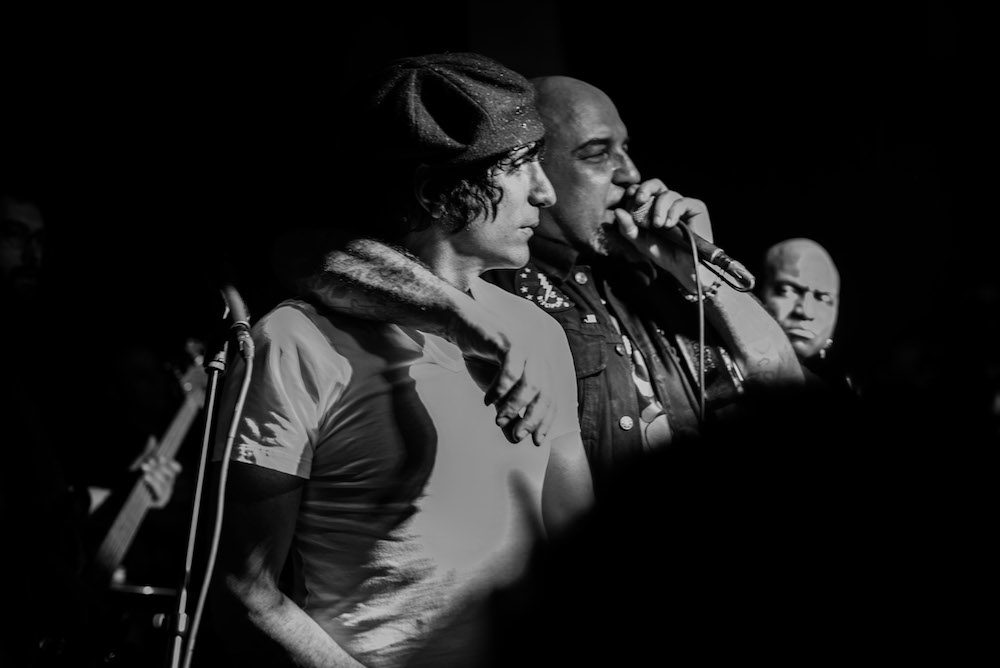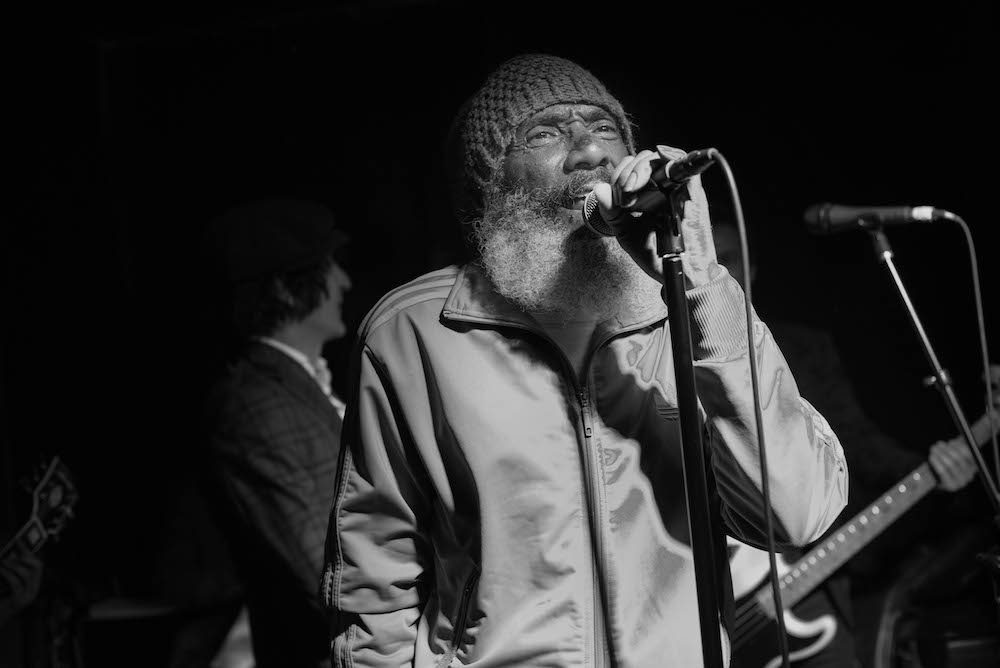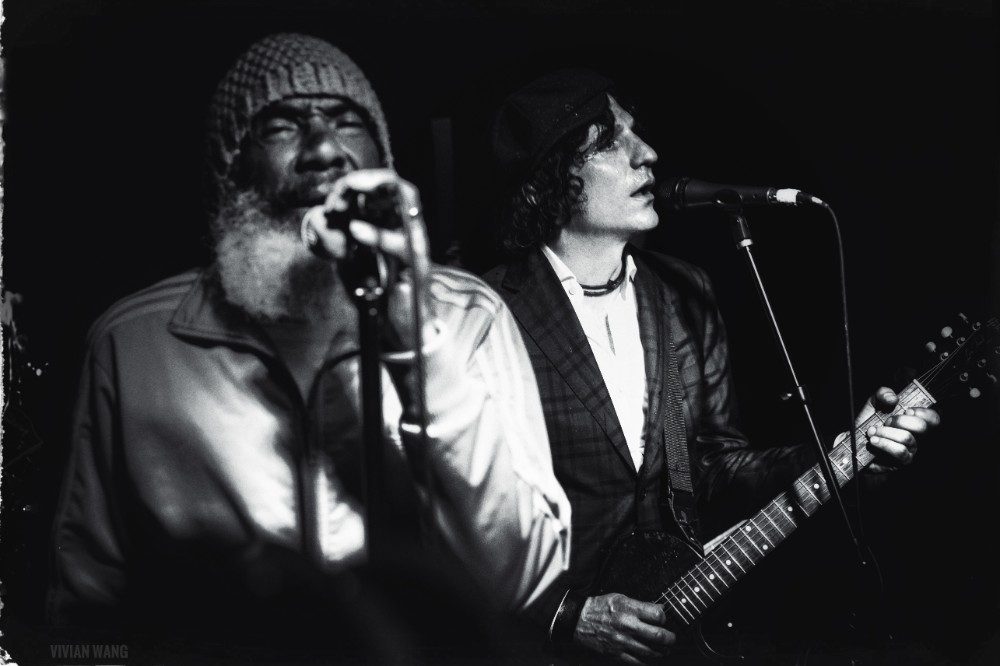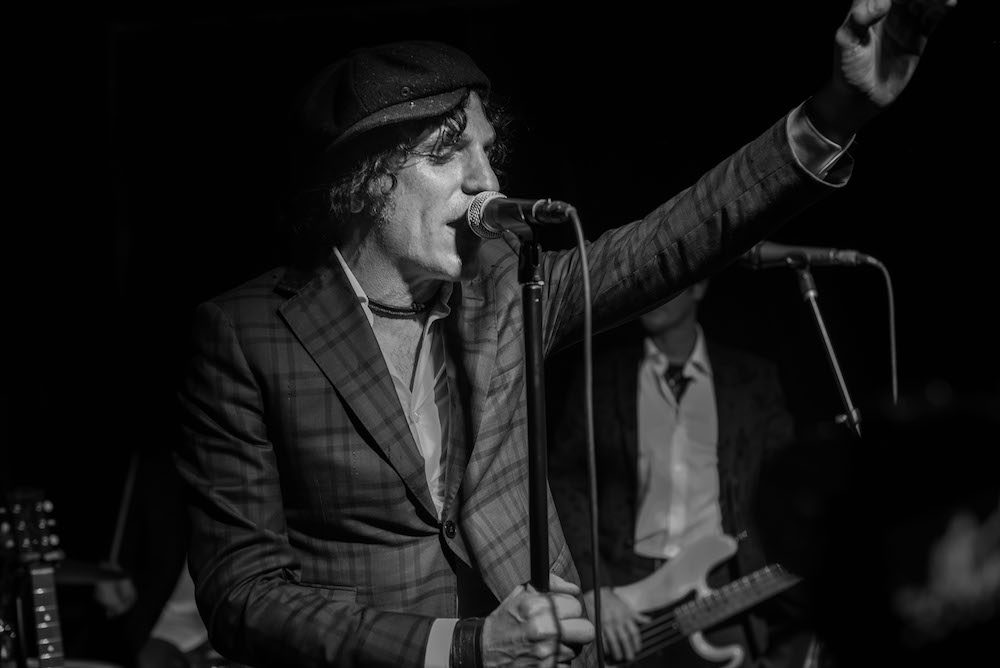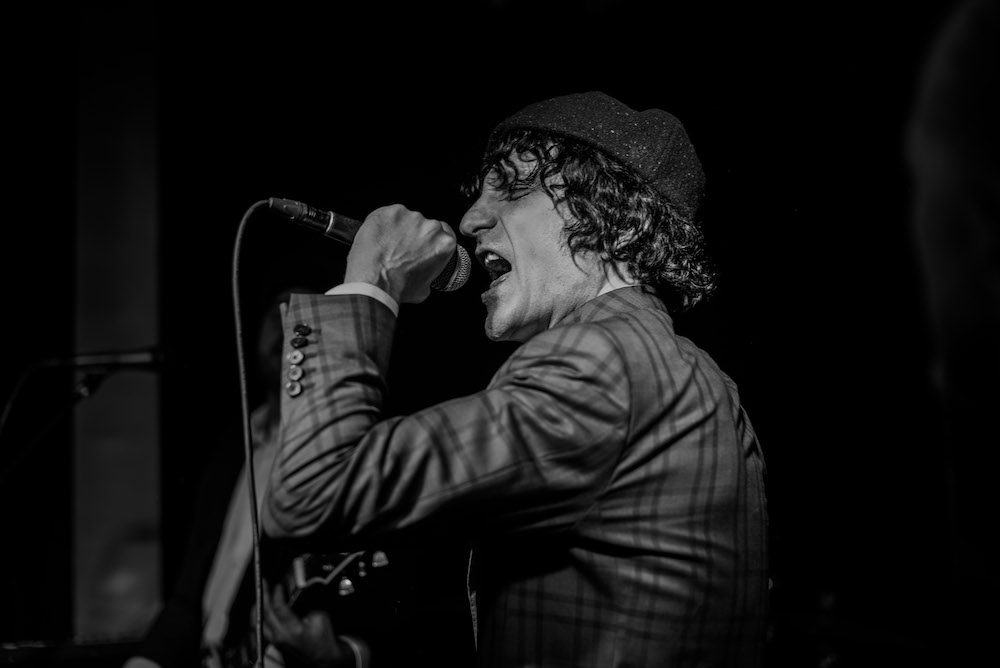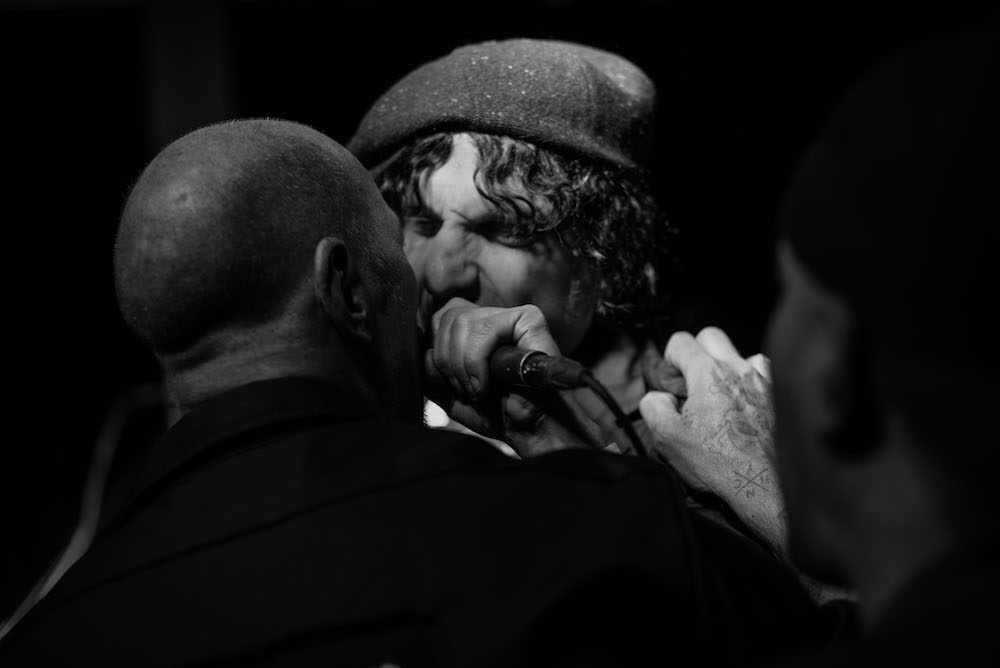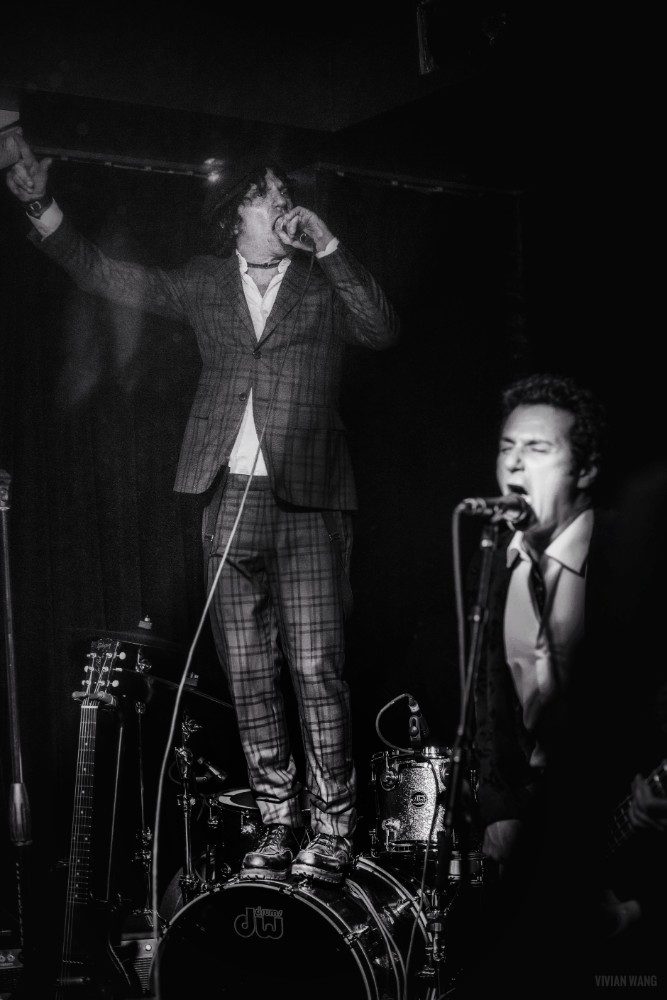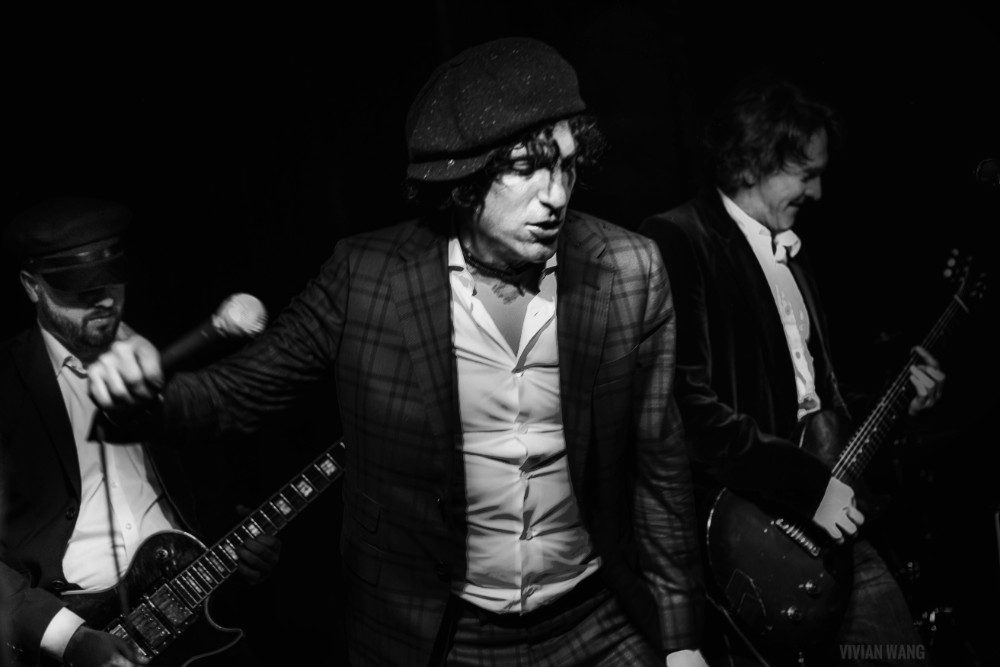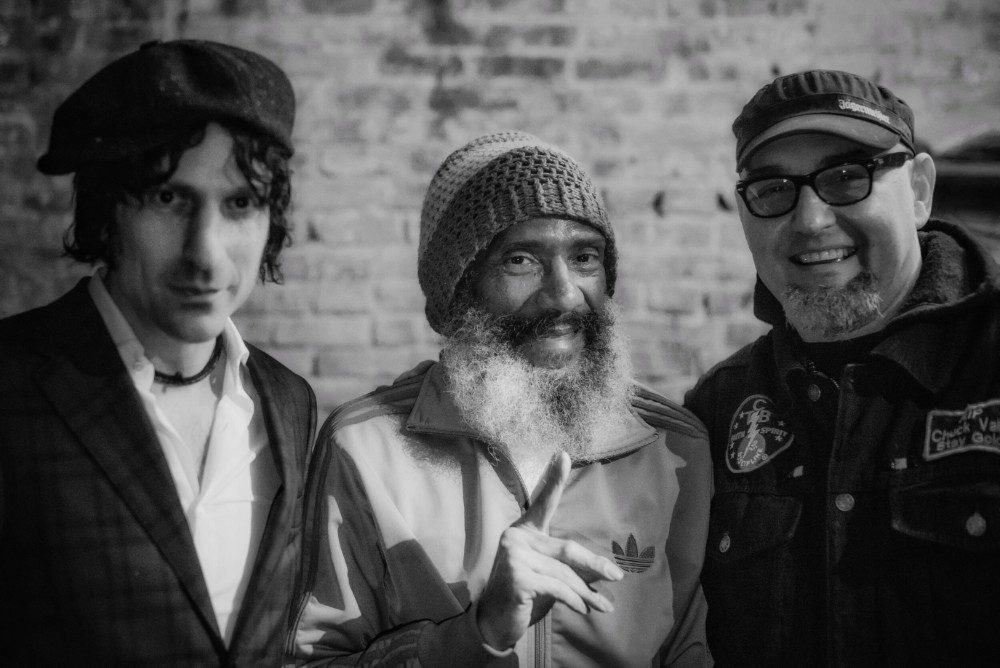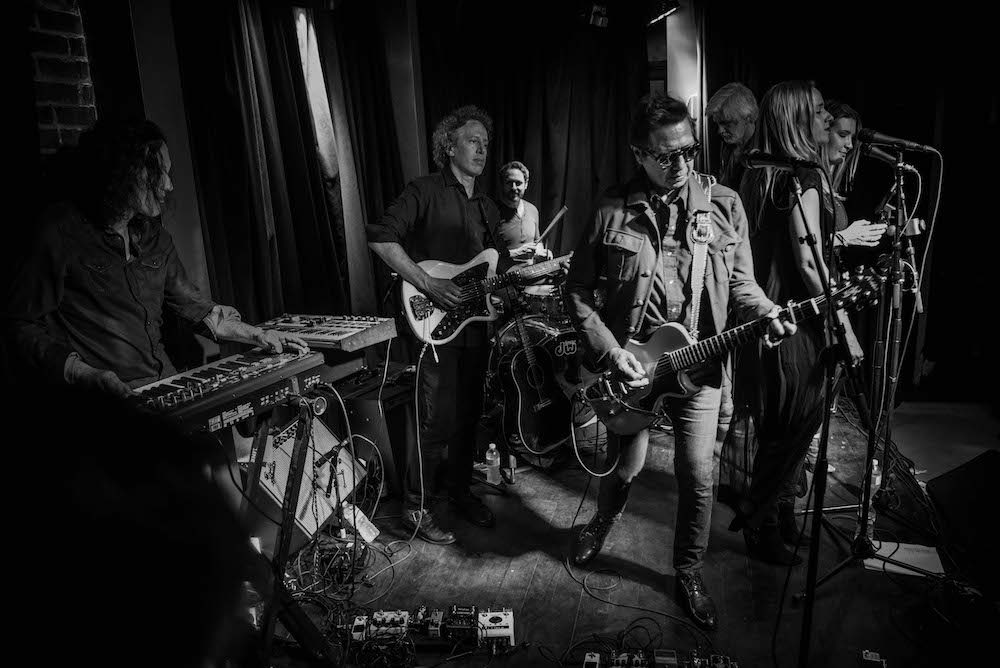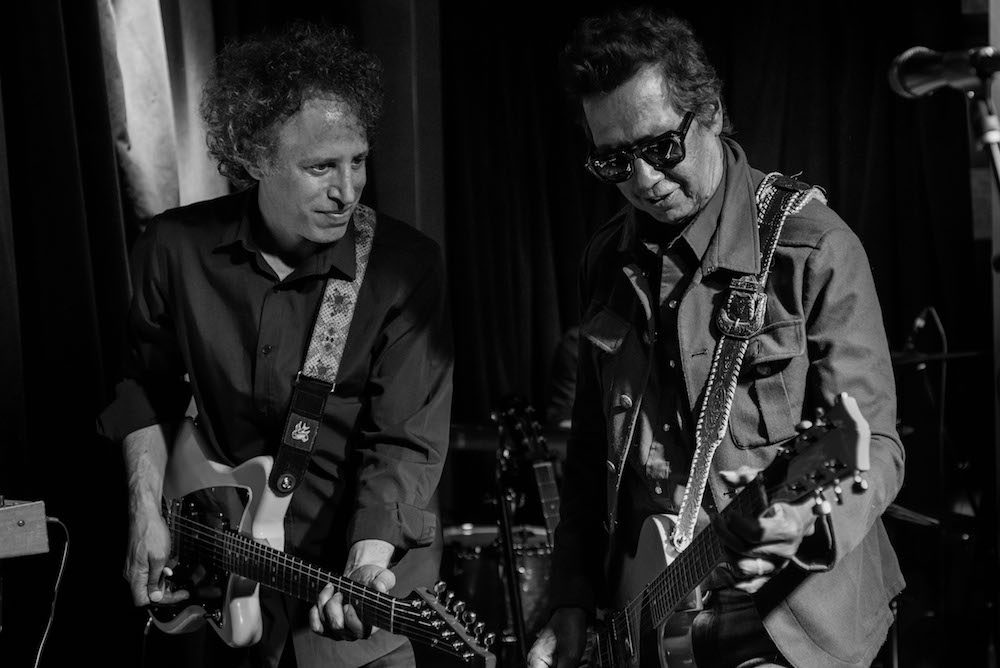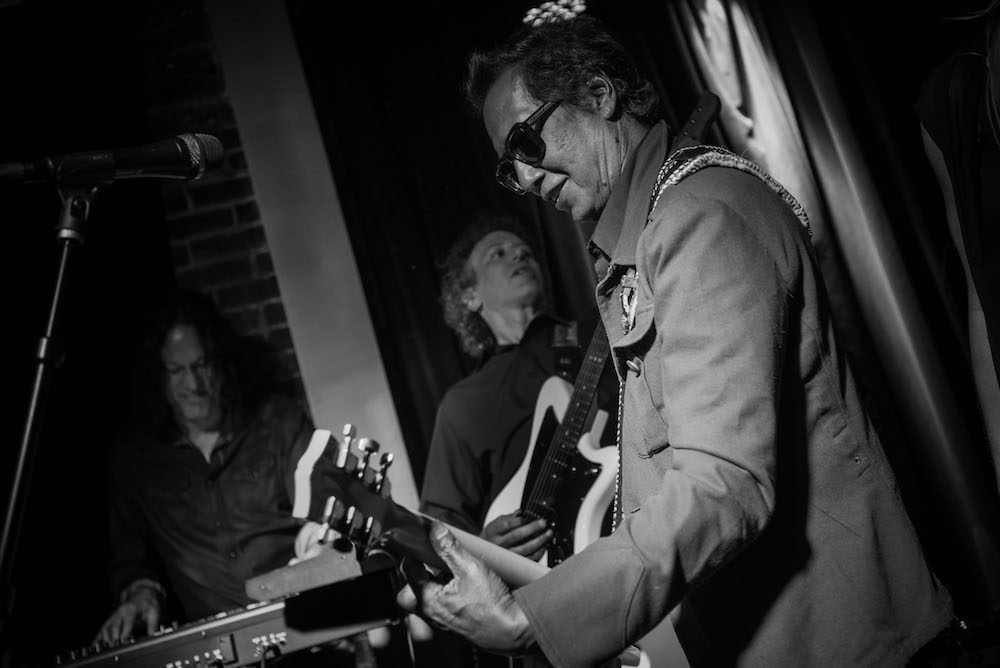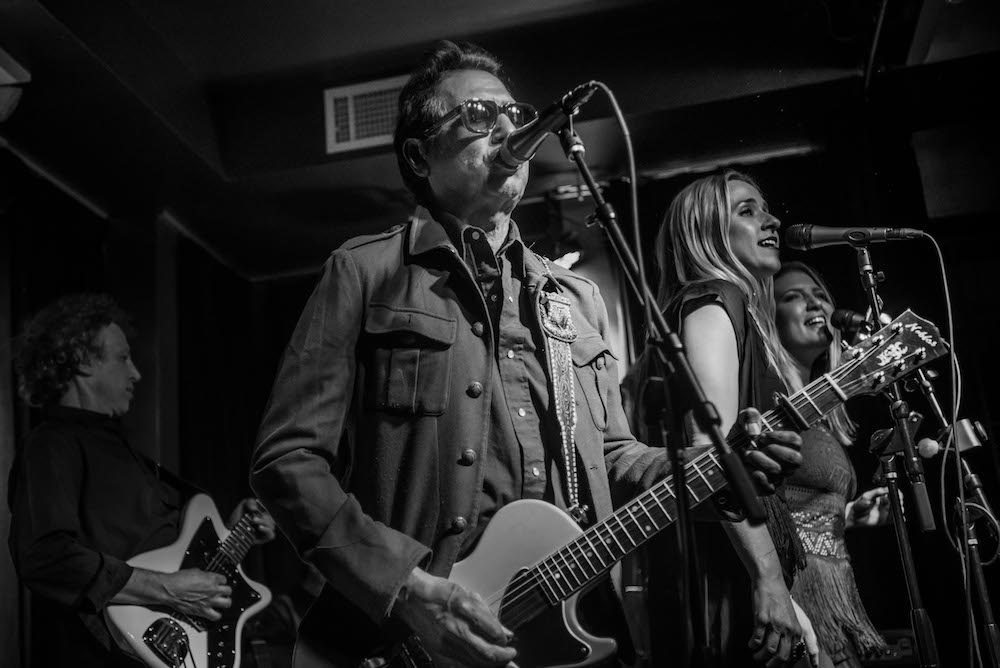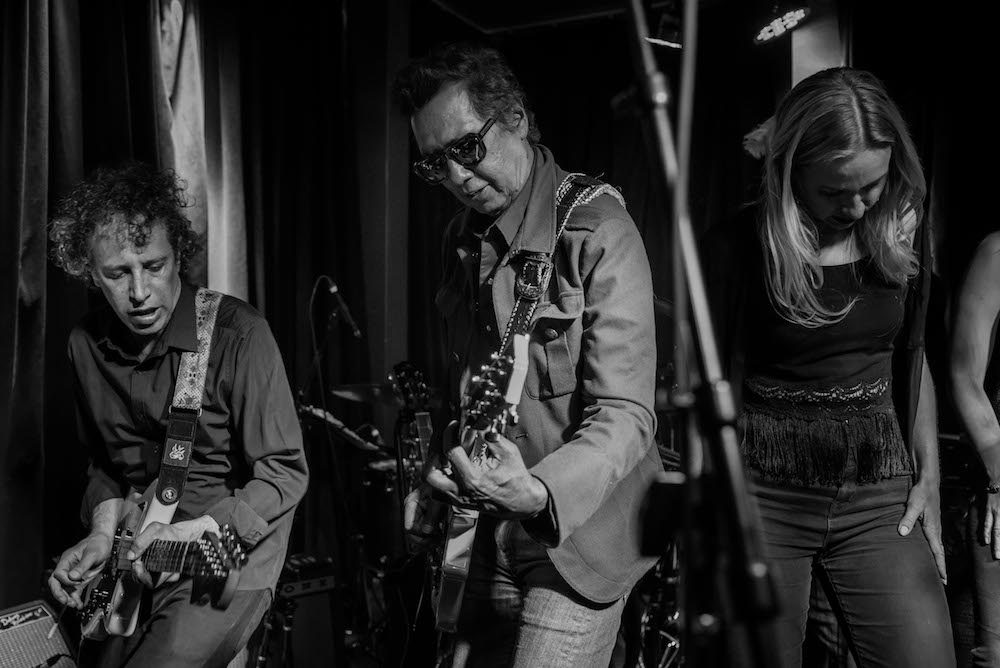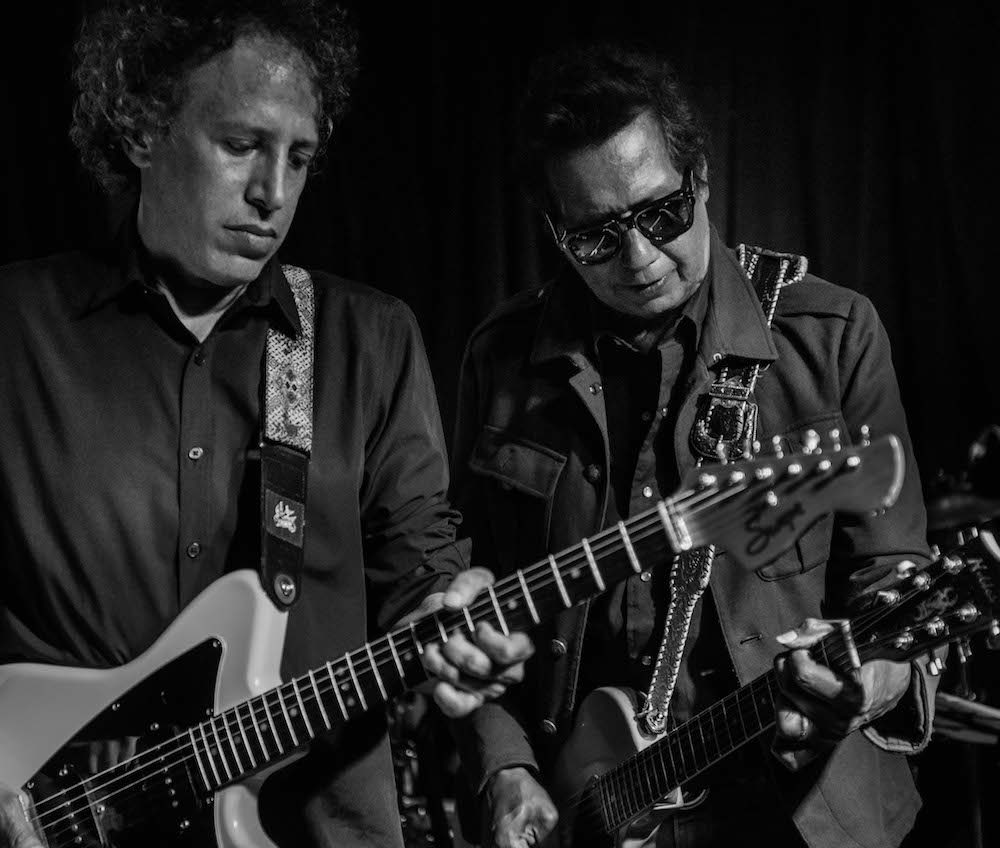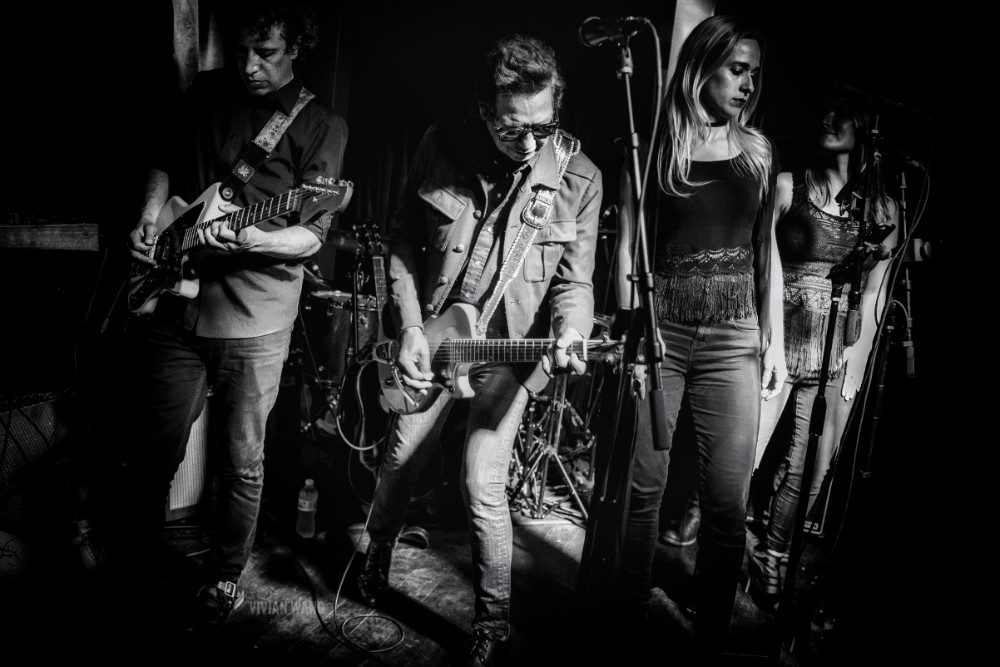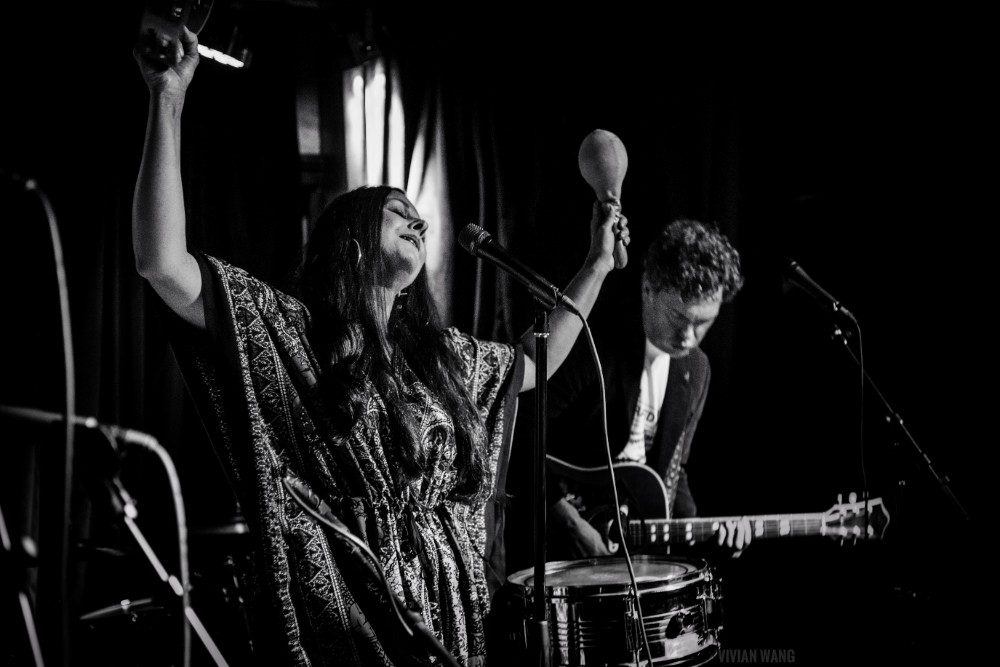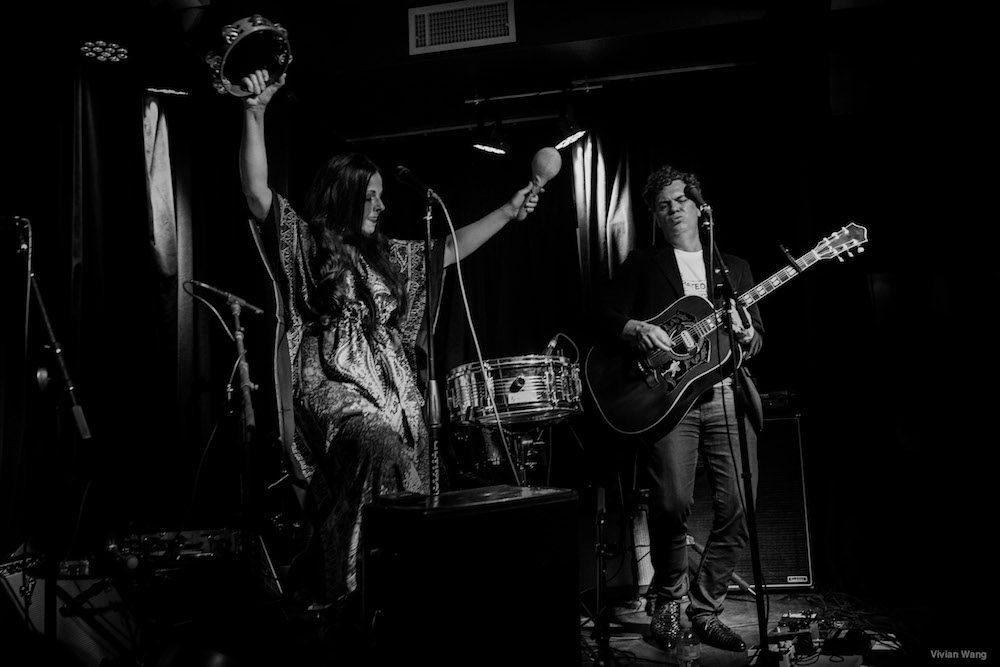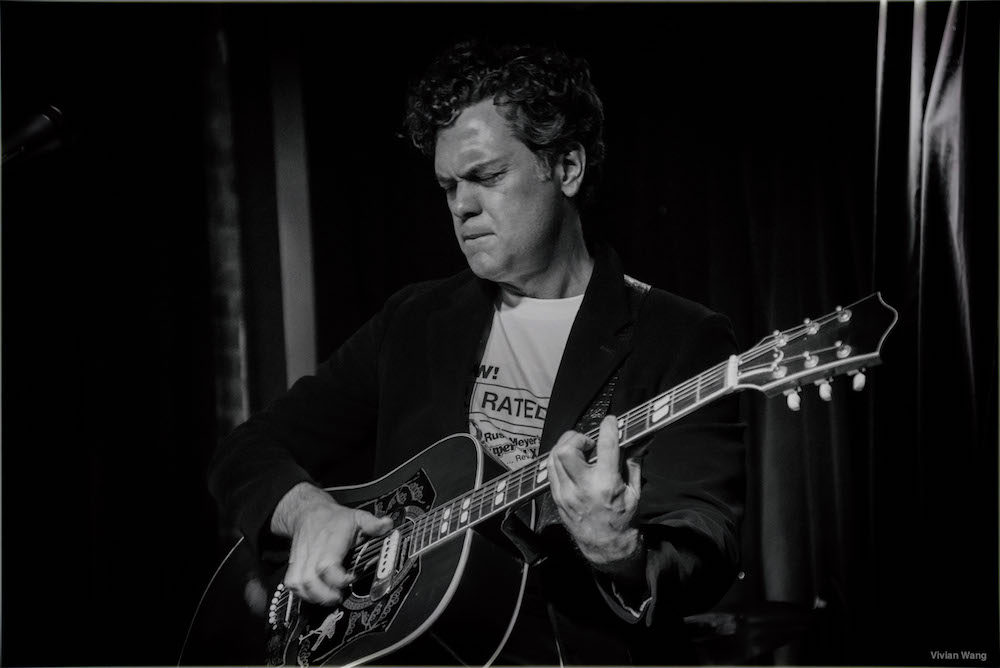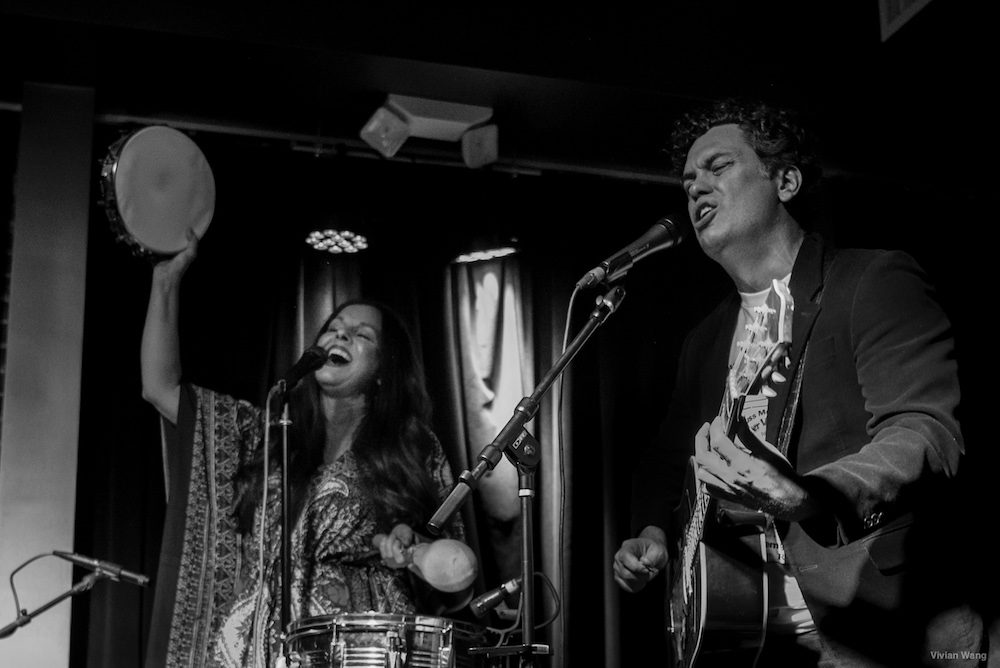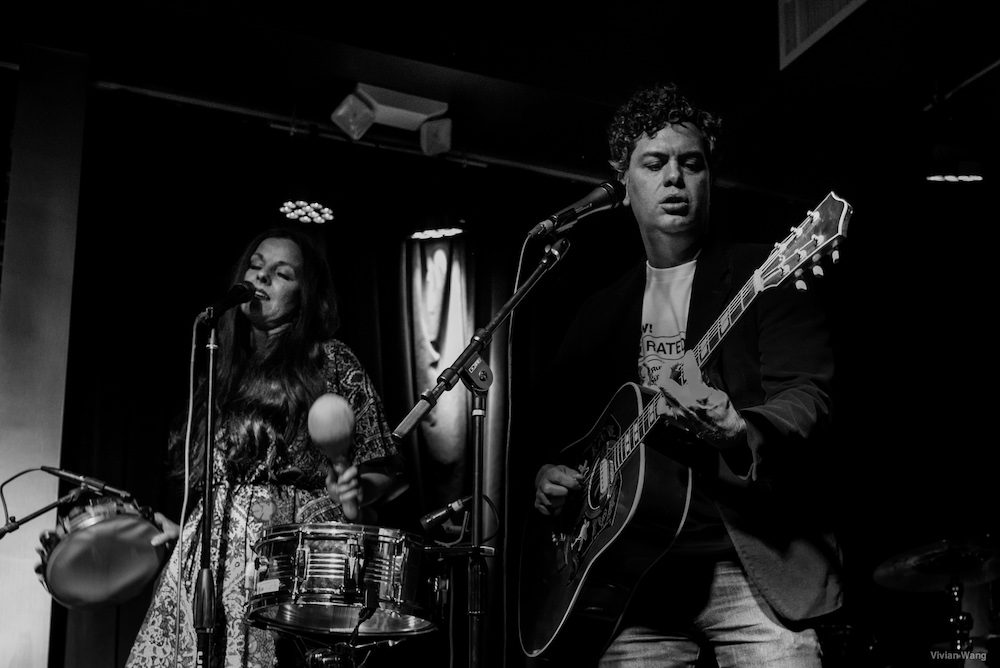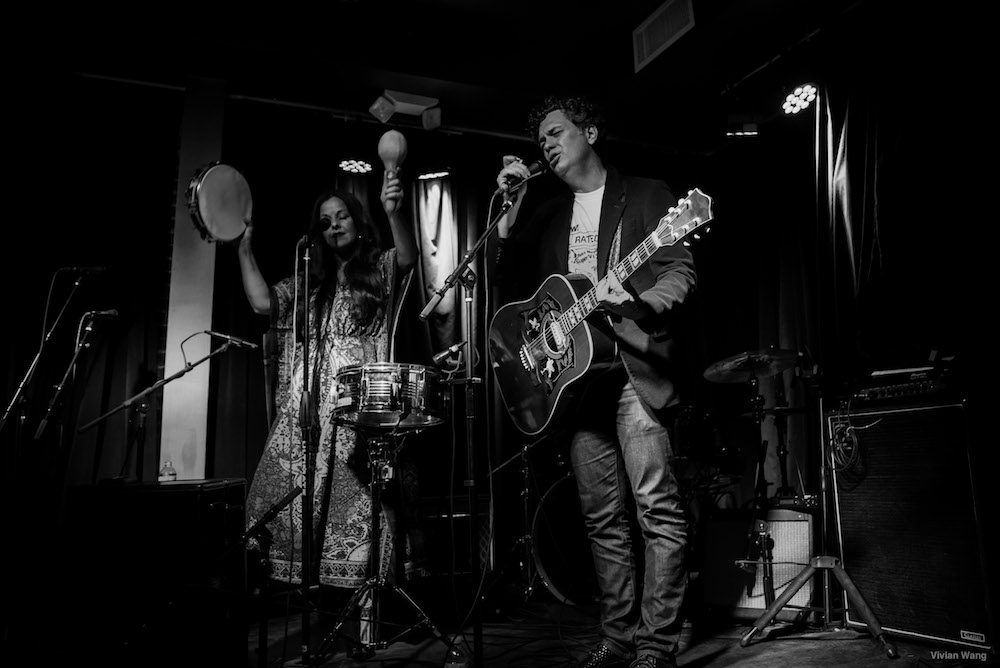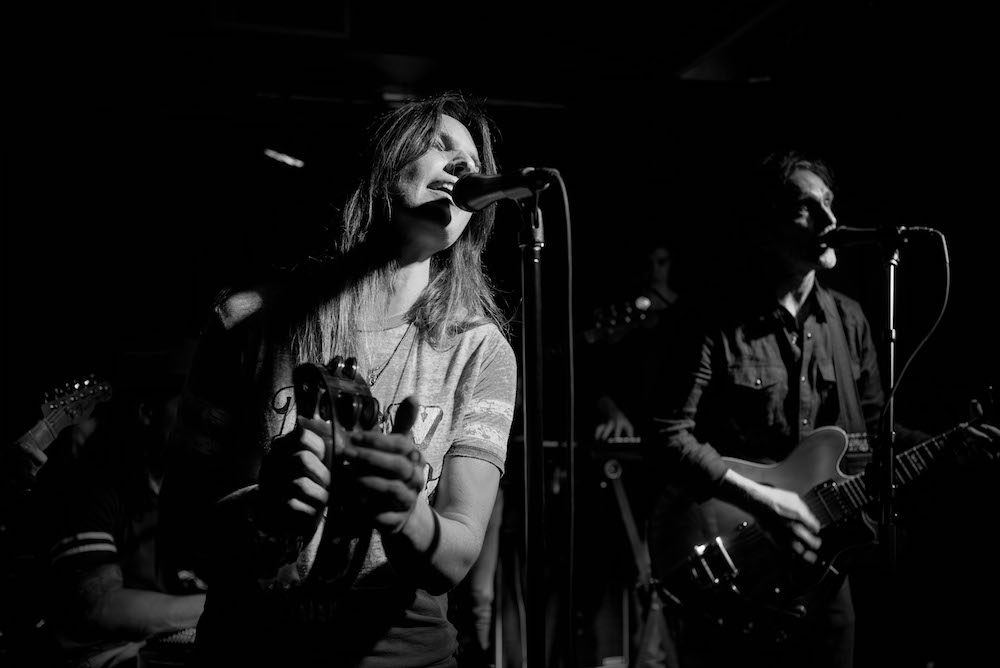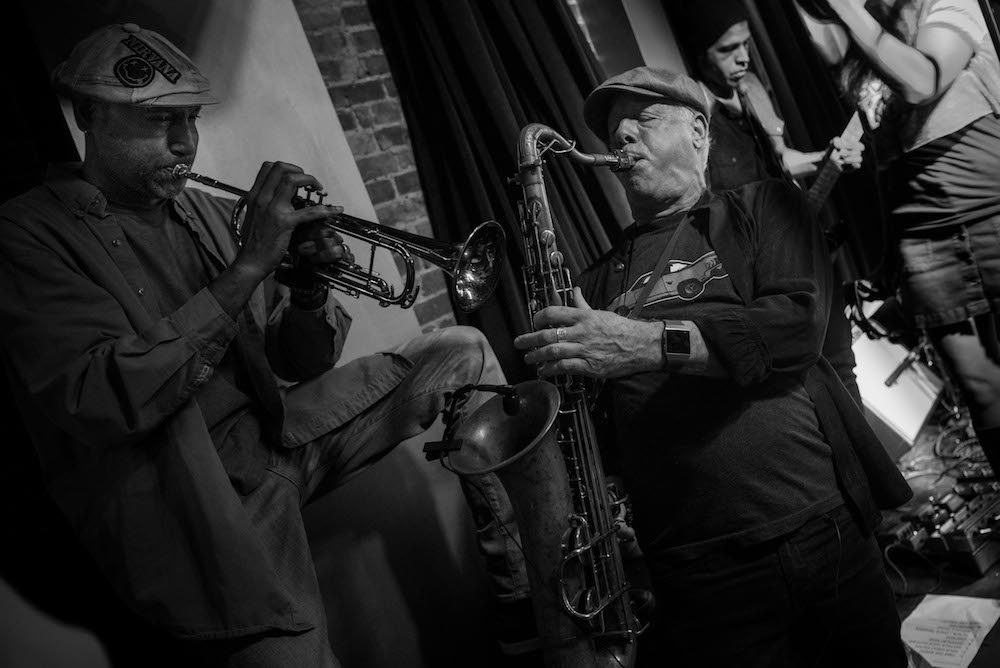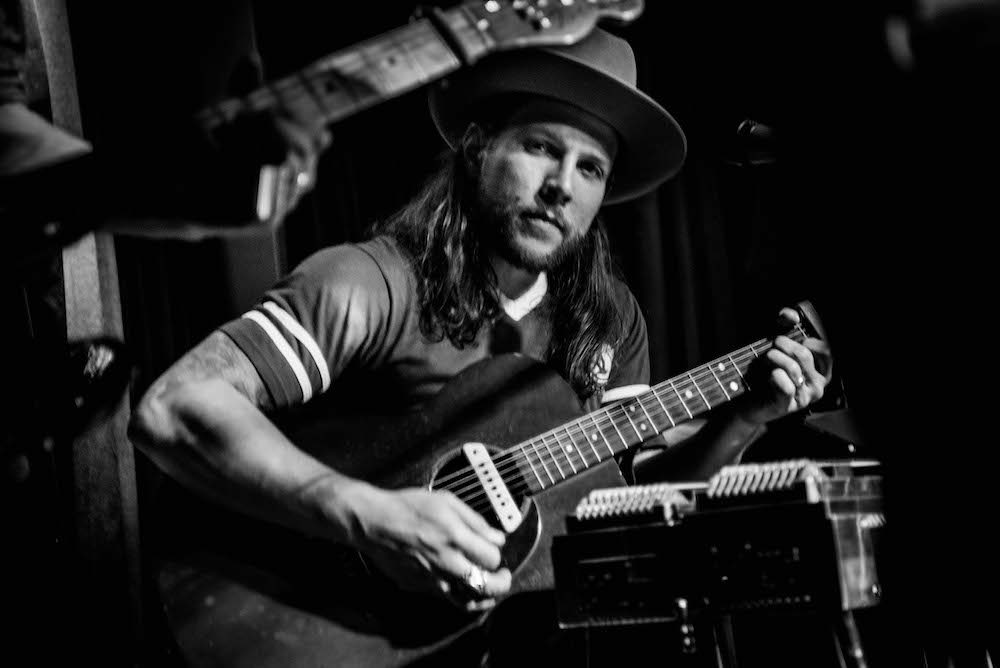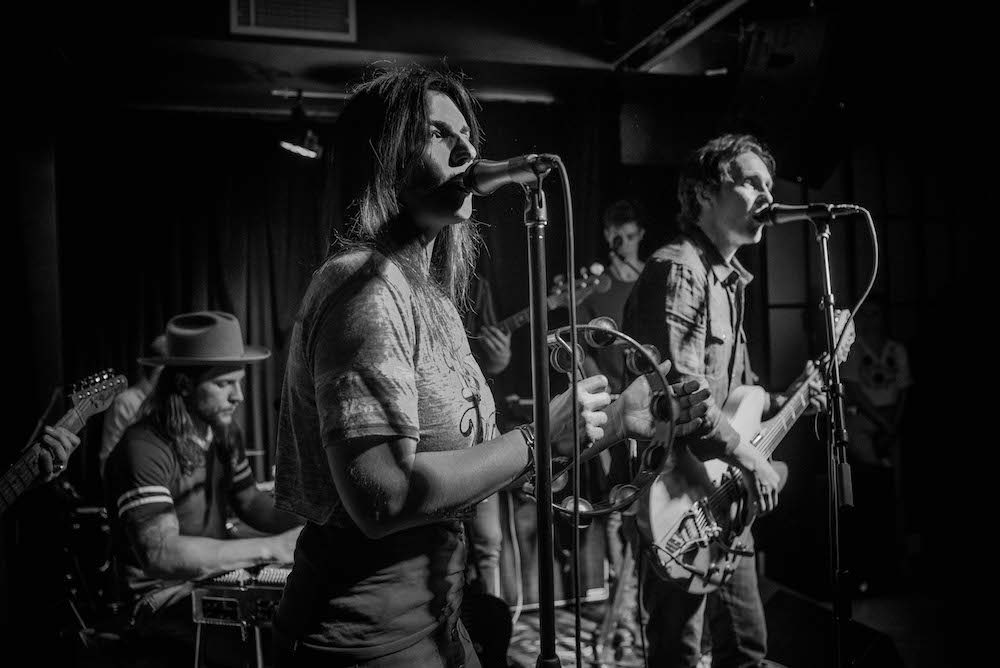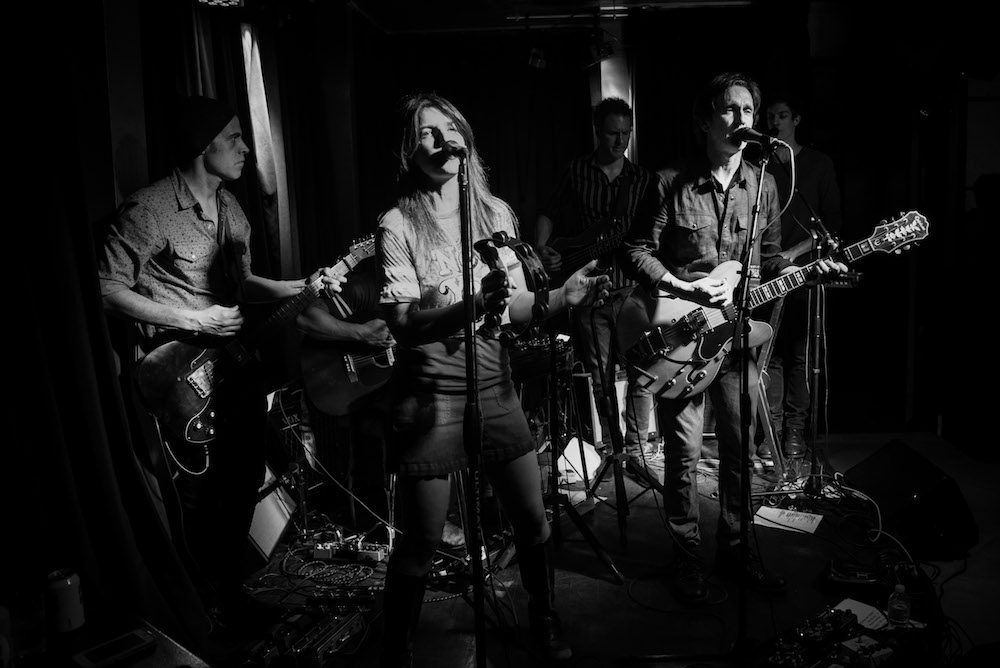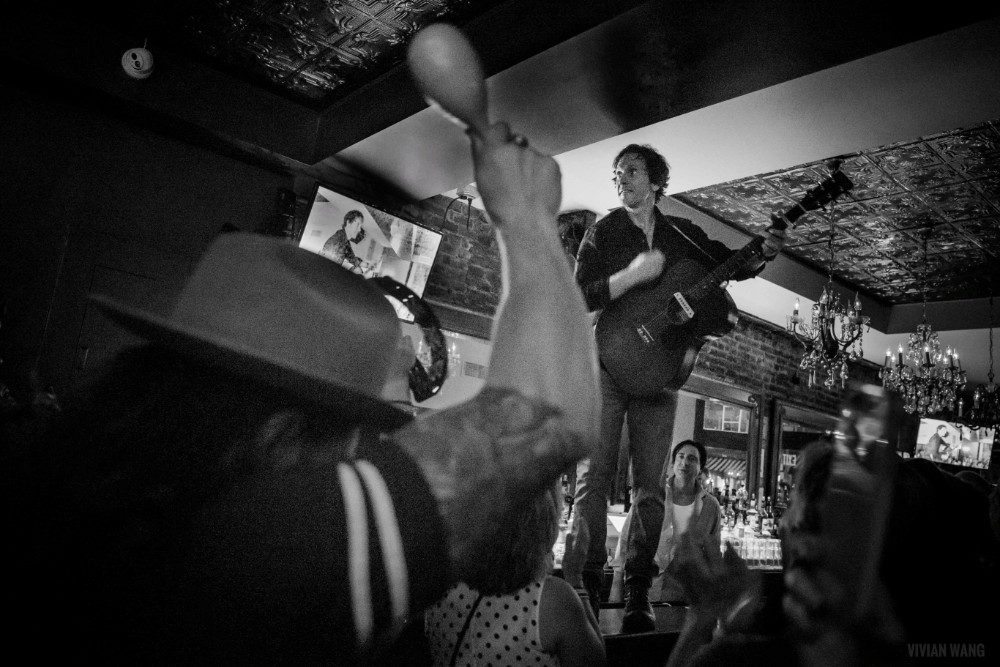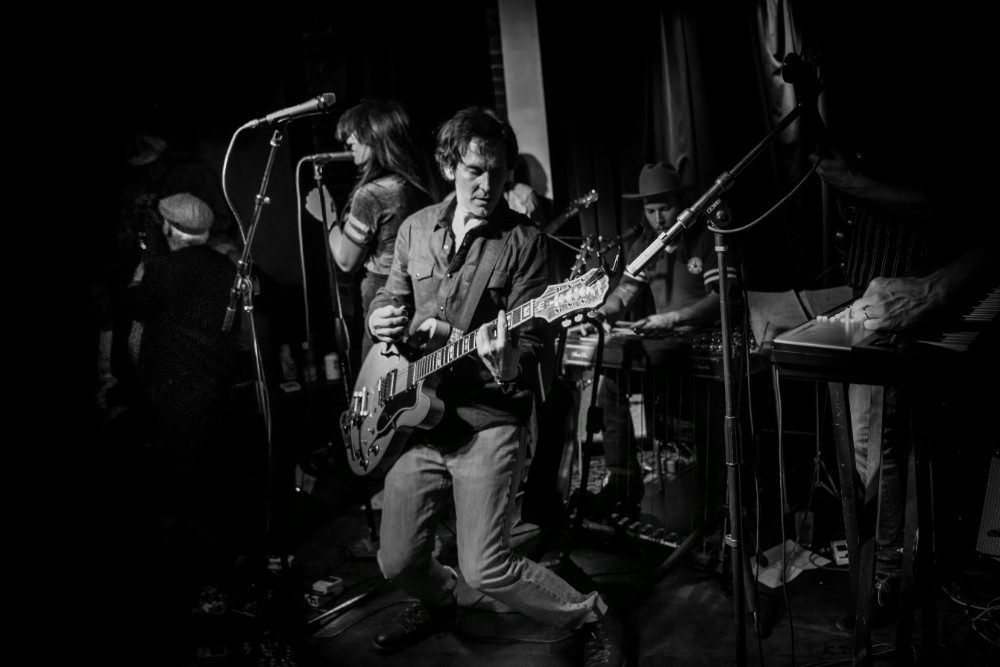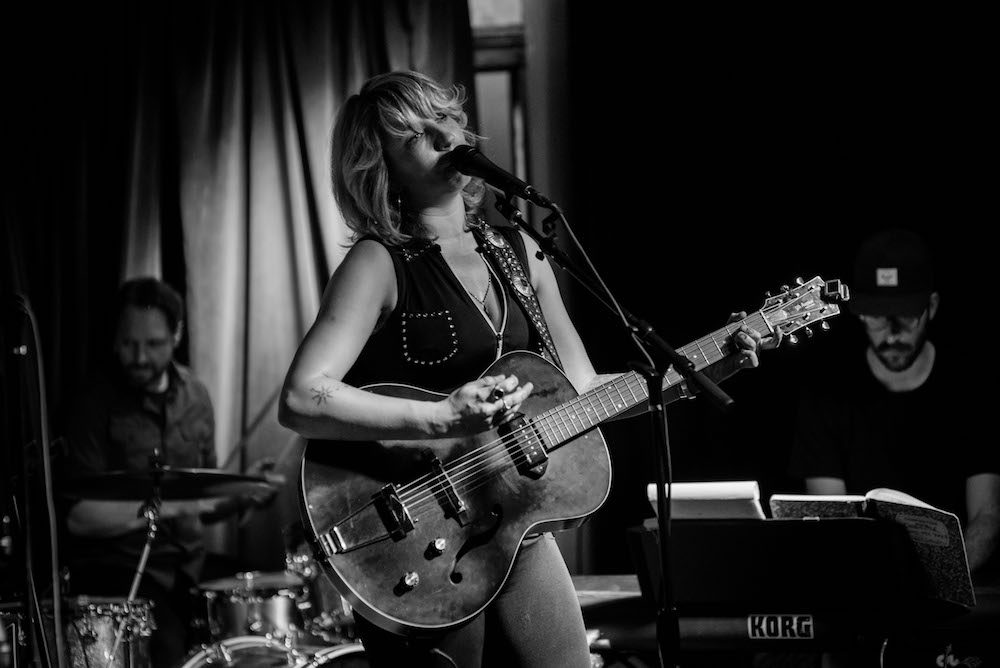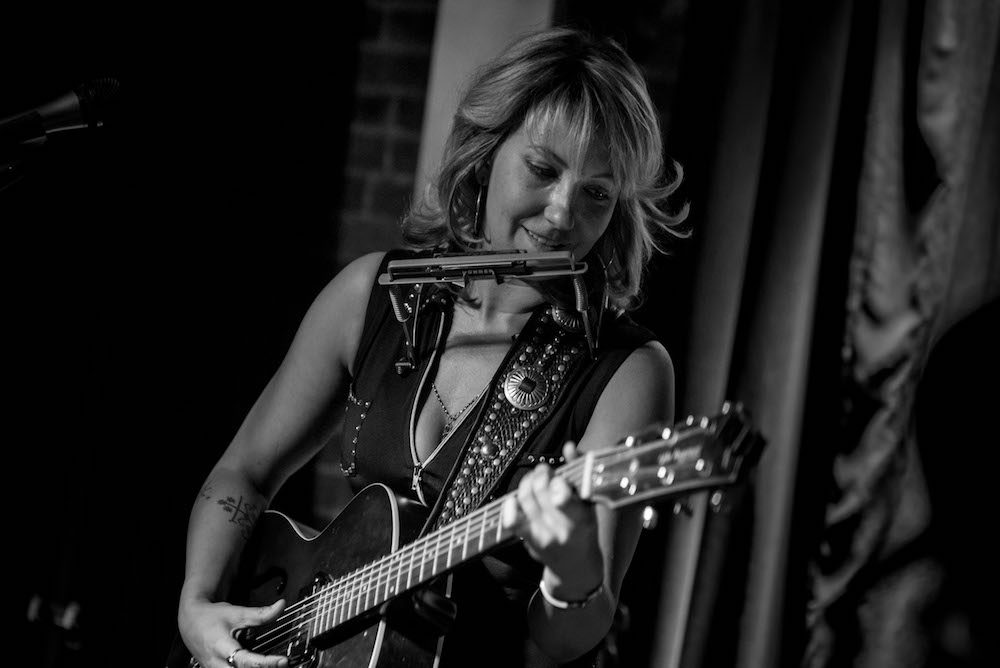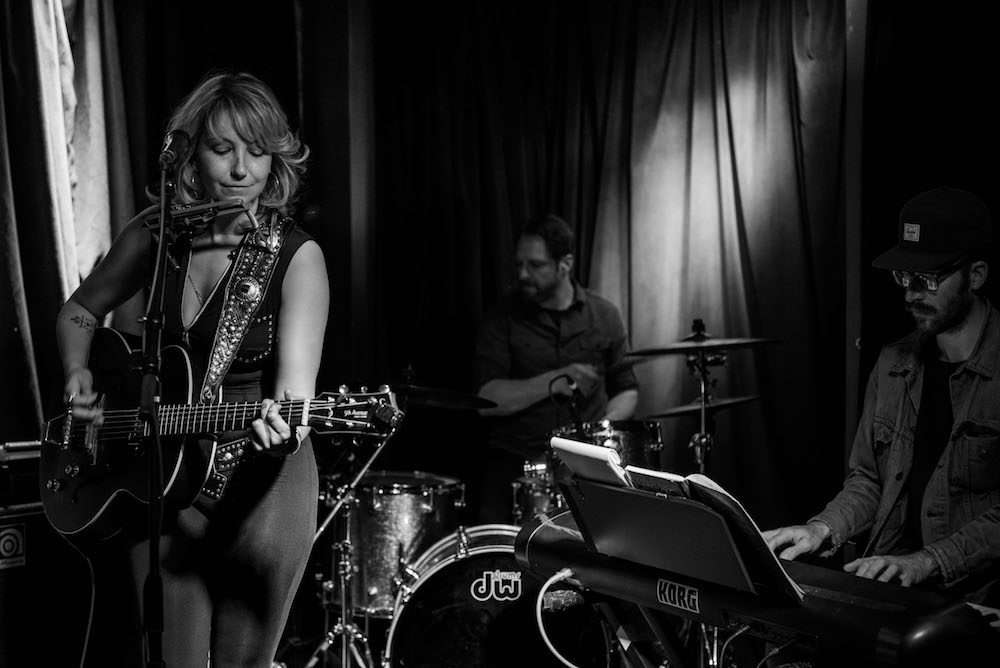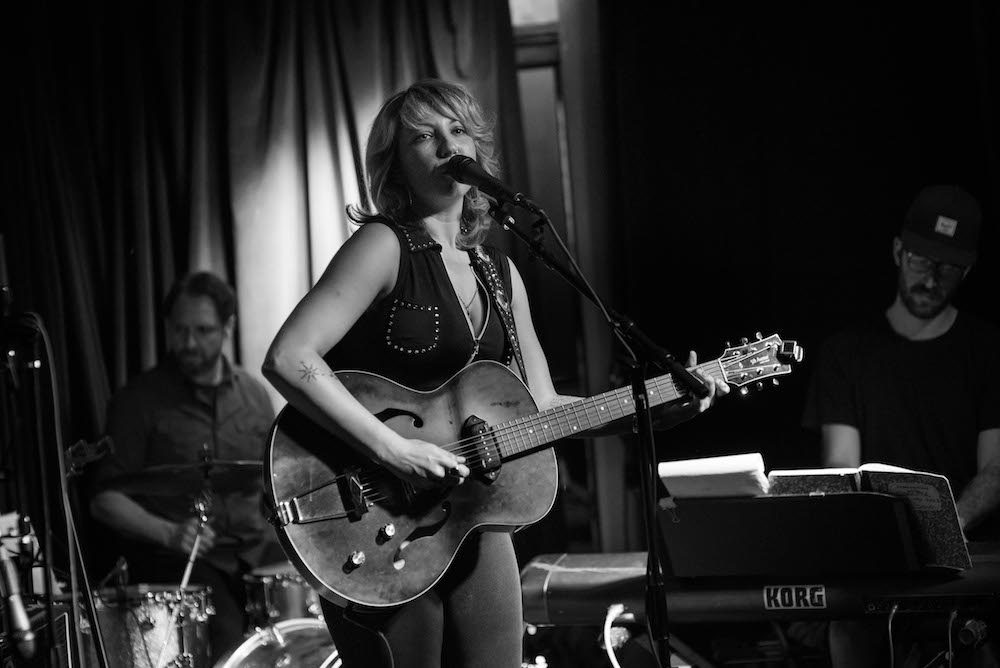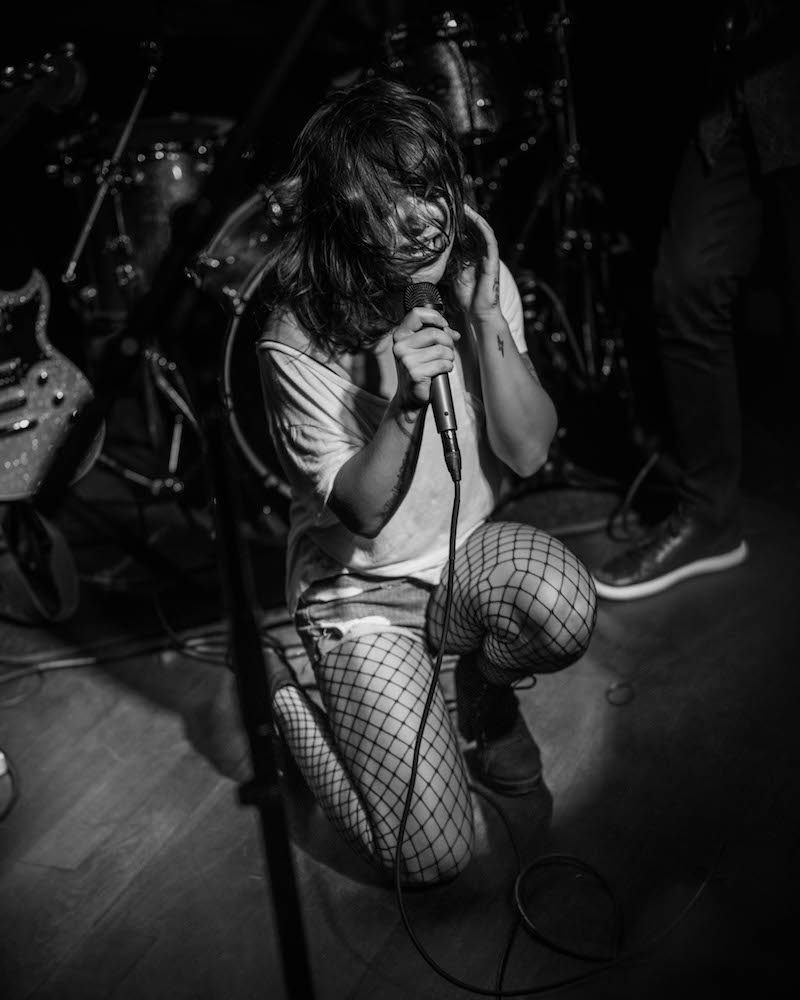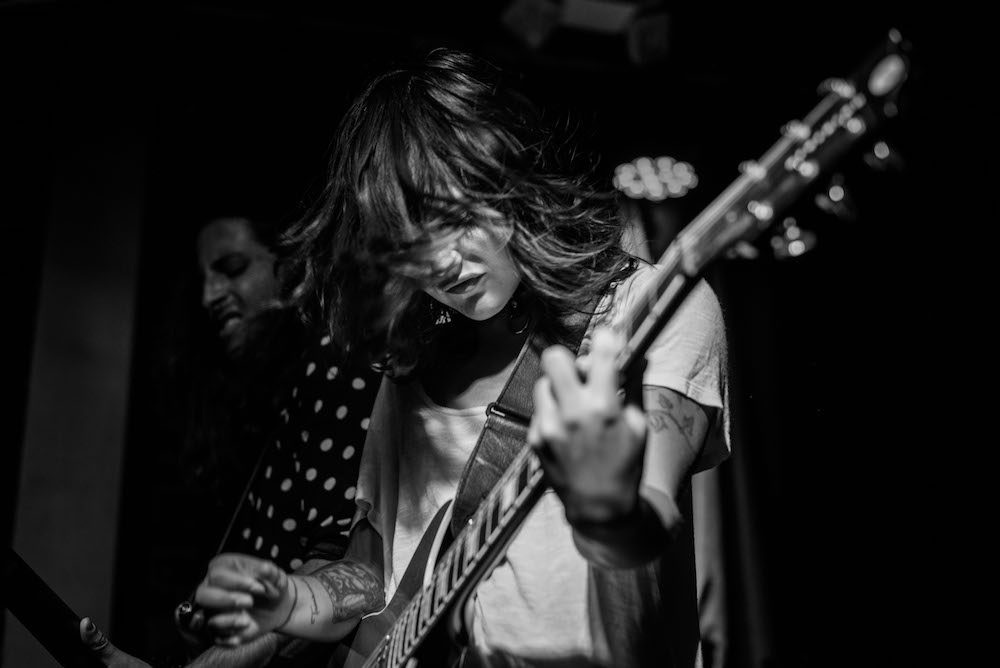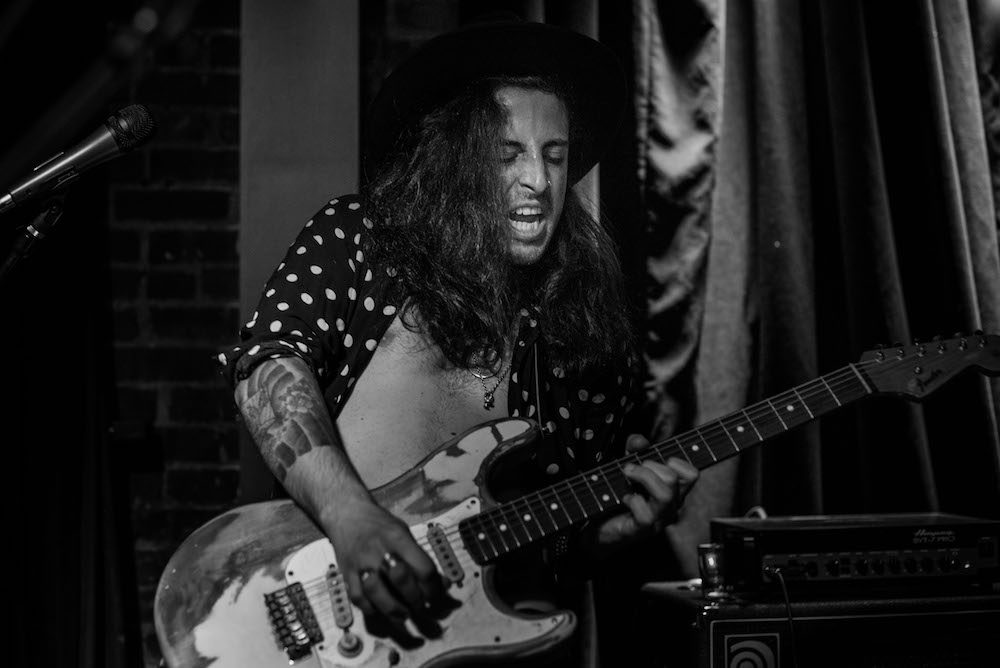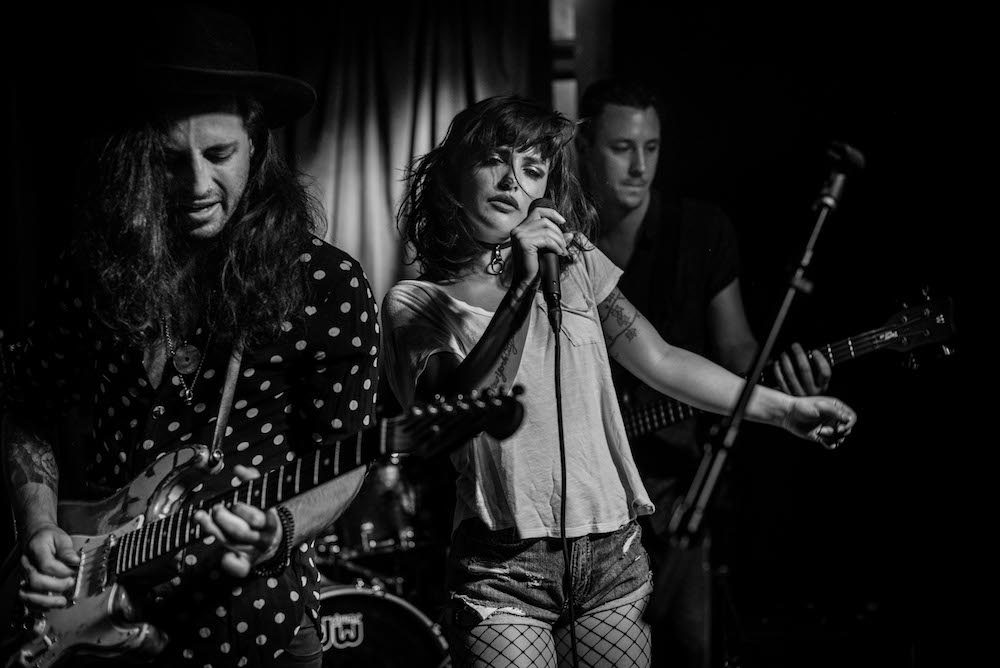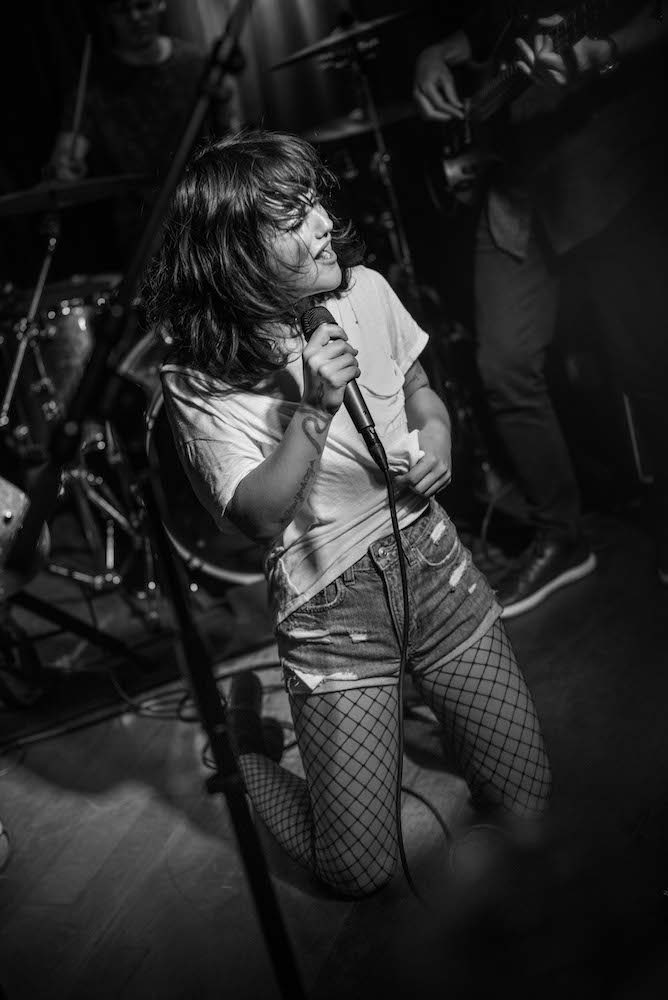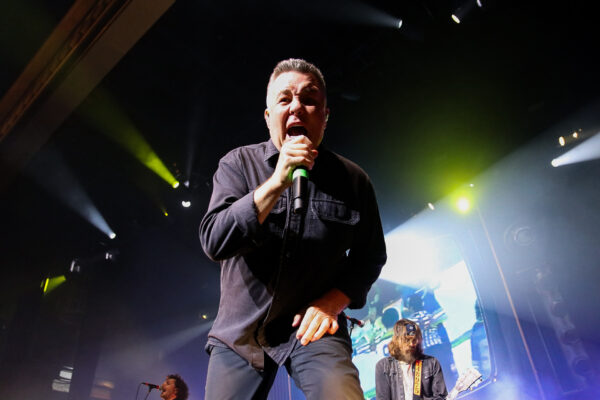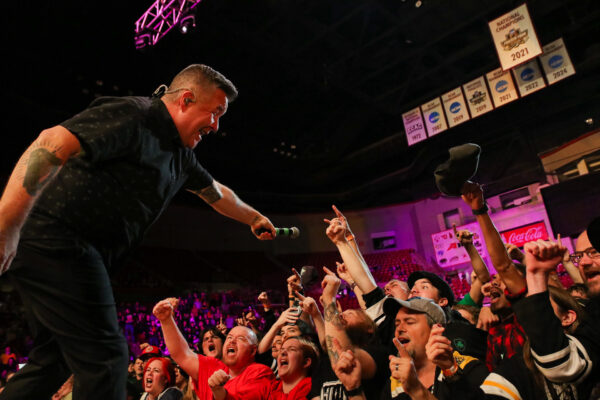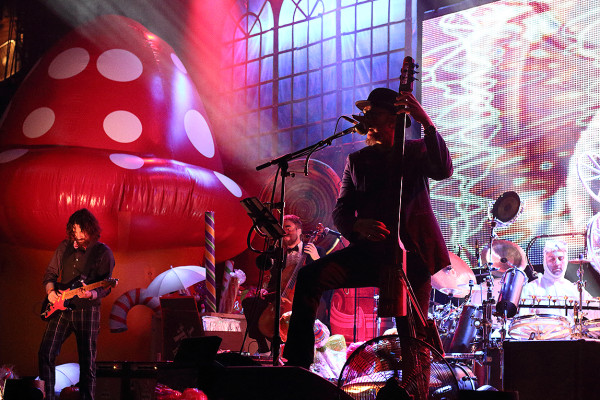Marshall Berman, the writer and urban historian, describes modernism in New York as infinitely joyous and infinitely precarious. Where Ginsberg’s Howl despairs of the churning jaws of development, asking “what sphinx of cement and aluminum bashed open their skulls and ate up their brains and imagination,” Berman finds possibility in the permanent revolution, from the streets of the Bronx to the neon valley of Times Square, Robert Moses and capitalist exhibitionism be damned.
There’s optimism in Berman’s view of modernity and the city, but those who have lived through New York’s endless metamorphoses also find much to lament as “all that is solid melts into air.” Defenders of the music scene often cite the venerated CBGB – now an upscale John Varvatos boutique – as an example of that which is holy, being profaned. (In fairness to Mr. Varvatos, care has been taken to preserve the history of the iconic venue, and the store hosts shows as well as fundraisers that benefit worthy causes like music education.)
But for all the heartache of seeing old clubs bulldozed over, there’s also the beauty of rebirth. Two weeks into the opening of Coney Island Baby, it’s clear that the phoenix song of the East Village endures.
Coney Island Baby is situated at 169 Avenue A, previously home to HiFi, and before that, Brownies. (The name is a nod to the Lou Reed song.) The scrappy bands that got their start on that small stage have gone on to dazzle stadiums – think Interpol, The Strokes, and the Yeah Yeah Yeahs. Down the street once stood a studio – 171A – where the Beastie Boys and Bad Brains recorded.
There’s a lot of important music history in that single city block. But the music landscape has transformed radically since the 1980s, with digitization ushering in a brave new world. Hit factories churn out anodyne, Auto-tuned songs, bands get promoted only after reaching a certain number of Instagram followers, and artists see only fractions of pennies when their songs are streamed. (For a brilliant and devastating documentation of this evolution, read Rhett Miller’s article, The Loneliness of the Long-Distance Rocker.)
As the creative world constricts and musicians struggle to find a toehold, places like Coney Island Baby play an even more vital role, both as incubator of up-and-coming talent and as archivist of rock history. The bar and music venue is the latest co-venture of Jesse Malin and the Velvet Elk Records family – Don DiLego, Tom Baker, Bree Sharp – as well as Laura McCarthy – all familiar faces if you’ve spent time at Bowery Electric, Niagara, or Berlin – other establishments bearing Mr. Malin’s imprimatur.
The venue’s soft opening on April 26th was a sold-out affair with New York hardcore legends Murphy’s Law tearing up the stage and keeping the packed house in a state of transcendent frenzy all night. Fans clamored for their chance to scream-sing into the mic with frontman Jimmy G, who at one point adroitly used a bottle of Jägermeister as a guitar slide. (Earlier in the night, JG christened the stage with a celebratory pour.) Mr. Malin and band – Derek Cruz, Randy Schrager, Rob Clores, Johnny Pisano – opened with a blistering set of hardcore classics, including Bad Brains’ Big Takeover and Reagan Youth’s USA, as well as songs by Heart Attack, Mr. Malin’s first band (formed when he was just 12). Bad Brains’ H.R. emerged from backstage for a few songs, during which the crowd settled into a reverent hush. And closing out the evening, Mr. Malin returned to the stage to join JG for some Minor Threat.
Coney Island Baby’s official opening night was May 2nd, and it kick-started Alejandro Escovedo’s spring residency in the city. Upcoming shows at Bowery Electric and Berlin will feature a rotating set of special guests, including Lenny Kaye (Patti Smith Group). The Tall Pines, a duo of Connie Petruk and Chris Davis, started off the night with an energetic roots-rock set. The rhythmic backbone was provided by Ms. Petruk on tambourine and drumming an alligator-skin suitcase.
Before Mr. Escovedo took the stage, Don DiLego and The Touristas, fresh off a European tour, treated the packed house to songs that meld urban imagery and rock verve with a wild west nostalgia. The band, joined by Danny Ray and Indofunk Satish on horns, took us straight from the dim bar and into filmic scenes, first sauntering down Avenue C and then driving ever onward as power lines converge on a vanishing point in the horizon. Magnificent Ram A, Mr. DiLego’s latest album, combines vivid lyricism with vintage Americana textures (sweetened by pedal steel) and indie-folk soundscapes. The music doesn’t fit neatly into any single genre, though perhaps alt-country comes closest – these songs belong on your playlist next to Okkervil River, Delta Spirit, and Aaron Lee Tasjan. (As an aside, I’m increasingly distressed by the concept of “alt-country” because it cedes the concept of “original” country to glossy, inoffensive, studio executive-ordained output. Classifying craftsmen like Escovedo or DiLego as alt-country is akin to calling Blanton’s “alt-whiskey” while elevating Fireball to the top 10 list.)
The folk ‘n roll vibes of opening night continued into this past Saturday, when Kelley Swindall charmed the audience with her blues-inflected stylings. Ms. Swindall was raised in the south on a steady diet of Kris Kristofferson and Patsy Cline, to which she later added other greats like Petty and Ryan Adams. The juxtaposition of her songbird charm and soft Georgia accent with old-school country and soul style is particularly compelling when it comes to darkly seductive numbers like “The Murder Song.” (I’ve been a fan of murder ballads for a long while now – something I can admit to here, in this safe space of music lovers. My first encounter with these songs of betrayal and self-ruin was through the 78 Project, where artists record songs from the public domain, like “Banks of the Ohio,” in a single take via a 1930s Presto.) Ms. Swindall puts her own insouciant, modern spin on the murder ballad tradition, and even in a song of scorned love and plotted revenge, there’s a welcoming playfulness. As she tapped out a rhythm on stage, backed by Michael Hesselein (keys) and Randy Schrager (who did triple duty behind the drums with Malin and Escovedo earlier in the week), Ms. Swindall’s silver boots proved to be an apt visual accompaniment to a glowing set.
Rounding out the night in fierce fashion was Fiona Silver, who delivered an electrifying series of songs with classic rock and vintage soul touchstones. Ms. Silver’s diminutive form belies a powerhouse voice and commanding presence. I’d been warned about her firepower by photographer friend Cortney Armitage, but words can’t quite prepare you for the moment when Ms. Silver drops to her knees to belt out the final verses of a song.
This is merely a sampling from three nights at Coney Island Baby. Upcoming shows include Craig Finn (of The Hold Steady) this weekend, and two nights with The Longshot (Green Day’s Billie Joe Armstrong) later this month. Shows are selling out at lightning speed, so set those calendar reminders and do some index-finger stretches to improve your point-and-click dexterity.
The next time you’re handed a drink ticket at Coney Island Baby, take a closer look. It’s a photocopy, in miniature, of an old flyer that reads: “171A: Cheap Rehearsal & Recording” – a reminder that in this shapeshifting town, nothing remains the same. To be a New Yorker is to witness daily the maelstrom of creative destruction. And while this dislocation has real human costs, change also contains seeds of the new. Even as familiar structures are replaced, the clarion call of the East Village remains strong – thanks in no small part to Mr. Malin & co.
Check out Coney Island Baby’s upcoming shows here, and stay connected on Instagram and Facebook.
Article: Vivian Wang
